






Jason leads Comdain’s experienced team of water and wastewater treatment professionals. With over 20 years project management experience and an impressive portfolio of treatment plant projects, he understands the challenges of working within complex brownfield environments. Collaborative and responsive by nature, Jason works with our clients to deliver quality, fit-for-purpose treatment solutions.
INTELLIGENT DOERS, DEPENDABLE DELIVERY
comdaininfrastructure.com.au
Jason is just one of our 90+ multidisciplinary engineering experts from across the country. With our ability to selfperform, our in-house design and specialised electrical, mechanical and instrumentation teams, we challenge convention and drive exceptional outcomes for our clients.
Jason Dennis Treatment Program Manager - QLD




e’re predicting 2018 will be a big year, not only for us, but across the entire utility sector. Water utilities are continuing to look for solutions to population growth, climate change and increasing customer expectations, while energy uncertainty has power utilities turning to battery storage and improvements in solar and microgrids for practical measures to safeguard against a constantly evolving sector.
At the centre of these issues, are utilities that are ‘going digital’ and figuring out exactly what this means for their organisation.
Instead of worrying about how to collect data and what technologies to use, utilities are delving deeper into how this fits into their core values and looking at the best ways to utilise the data and technologies that are already in place. This is just the utilities that have embraced digital, for some there is still a long way to go. There are however many utilities that have already successfully implemented digital technologies and processes, and learning from their experiences and mistakes could be valuable for others. It was this idea of collaborative knowledge sharing that sparked the concept of the Digital Utilities Conference.
Digital Utilities is a two-day conference running from 19-20 April in Melbourne that will feature an expert lineup of utility leaders talking about their digital transformations, the challenges they have faced, and what you can learn from their experiences.
The first round of speakers has already been announced and includes key players such as Ausgrid CEO Richard Gross, Horizon Power Managing Director Frank Tudor, Queensland Urban Utilities Chief Information Officer Susan Heath, Sydney Water CIO George Hunt, and many more. You can view our industry experts on page 44, with more speakers to be announced shortly.
While there is still a long way to go before everyone becomes a full ‘digital utility’, there have been major steps forward for utilities across Australia in the implementation of digital technologies and processes. We’ll be celebrating the organisations that are leading the way at the Digital Utility Awards. There are four awards up for grabs: Digital Utility of the Year, Utility Innovator of the Year, Best Use of New Technology, and Best Customer Innovation, with winners announced at the Gala Dinner on 19 April. You can nominate your organisation at www.utilityawards.com.au.
In the lead up to Digital Utilities and throughout this issue, we’re looking at all things digital, from big data, distributed generation and virtual power plants, to the use of satellite technology in the mapping, GIS and surveying sector, and impact of data on utility locating.
Being able to effectively use data in the decision-making process is a key skill that utilities will look to possess in order to increase efficiencies and reduce costs, and it will continue to be sought after in 2018. Given the importance of accurate utility locating in regards to safety and minimising risk, new technologies, digital processes and the use of data is also set to revolutionise this field.
In addition to the Digital Utilities event, Utility will also be attending other key industry events, including Locate 18, Power Australia, Smart Energy and WIOA NSW, where this issue will be distributed. I’m excited to talk further with a lot of you at these events about how your utility is tackling the current changes in the sector, and I can’t wait to see what other developments this year brings.











































Anyone familiar with Lewis Carroll’s Wonderland will recall it is an unsteady, shifting geography, where linear thinking, rules and stability don’t apply. Through the Looking-Glass is meant as an instruction of how to negotiate this gravity-defying world – peer very closely at this reflection and make strategic decisions to successfully pass through this new world.
The biggest challenge for Alice is the rapidity with which things change without warning. Elements meant to be measured and paced, like the growth of her body, occur so quickly that the unmitigated knock-on effects are disastrous.
The modern day world of energy is, without doubt, a wonderland.
The industry’s transformation is driven by many things: smarter energy solutions, affordability for customers, security and stability.
These key points can’t be considered in isolation, but rather each is a cornerstone on which solutions are balanced.
At the recent 2017 Energy Networks Australia Gala Dinner I presented the Innovation Award to SA Power Networks for the Salisbury Trial, an Adelaide-based project in which 100 customers received battery storage systems. This trial resulted in a myriad of benefits for individuals, communities and enterprise. Reduced bills for customers, increased backup power for communities, and deferment of a $2.9 million network upgrade.
What is striking about this particular project, and all three recipients of awards presented on the night, was how instrumental to success both collaboration and innovation proved to be. Innovative concepts require collaboration and partnership in order for ideas to reach fruition.
There’s a second way in which collaboration and innovation has transformed our energy landscape - we’ve become part of the shared economy. Transport didn’t take Uber seriously. Hotels didn’t hear Airbnb sneak up from behind. Retail has been forced back to the drawing board to find ways to compete with online shopping. Traditional business models in our sector are taking note from these lessons.
Our own landscape is being entirely transformed. Advancing technology has created a shared energy economy. Customers are selling energy back to the grid and power is a shared asset, with transmission and distribution no longer being one-way activities. Every part of our sector needs to respond; legislation and regulation, pricing models and system design.
Several of the initiatives shortlisted for awards in 2017 were powering communities independently of traditional poles and wires. Advances in technology are redefining the way in which energy services can be provided. Continuing improvements in distributed energy resources provide new

opportunities for increasing the efficiency of electricity supply through microgrids and stand-alone power systems.
For some customers there may be significant benefits in deploying lower cost, off-grid solutions in regional and remote communities. Analysis undertaken by Energeia for Energy Networks Australia and CSIRO found that microgrids are most likely to be cost-effective in areas that are the highest cost to serve. With a flexible regulatory framework, lower cost off-grid solutions like microgrids and stand-alone power systems could be employed by networks to reduce the total costs for all customers.
The transformation of the energy sector is a given. For networks, the challenge is to innovate and evolve quickly enough to ensure they don’t miss the wave of change.
Further, we must ensure that all our innovative work, regardless of where it sits within a business, is aimed squarely at improving consumers’ experience, and that the environment in which we operate can support and drive an innovative mindset.
These challenges are likely to require just as much fresh thinking from regulatory policy and rule makers, as from energy network businesses themselves.
This should be based on the real outcomes for all customers in our energy markets. It should be led by market evidence. During a time of rapid technological change, Australia’s regulatory policy is yet to fully realise the benefits of innovation activities undertaken by network businesses.
This means that Australian electricity customers may miss out on the opportunities for integrating new technologies into the grid in ways that can not only make them money, but can lead to reduced costs for all consumers. Our current pricing structures are at the top of the to-do list, the status quo is fundamentally unfair and in desperate need of reform.
Considering recent trends in the energy sector, innovation in the delivery of network services may have substantial social benefit. Conversely, the absence of innovation will come at a cost.
We are living in the most momentous period of innovation the energy sector has seen since the days of Tesla and Edison. Redesigning regulatory frameworks that match the pace of technology; modernised infrastructure; exceptional customer experiences; value for money; and stable yet responsive business models are challenges we must meet to service the needs of tomorrow and well into the future.
Our collective success requires a multi-faceted approach. Two keys in particular will help to unlock the future, and if we look at the successes showcased at Energy Networks Australia’s Annual Awards, both components are required to reveal the prize behind the door. Innovation and collaboration.
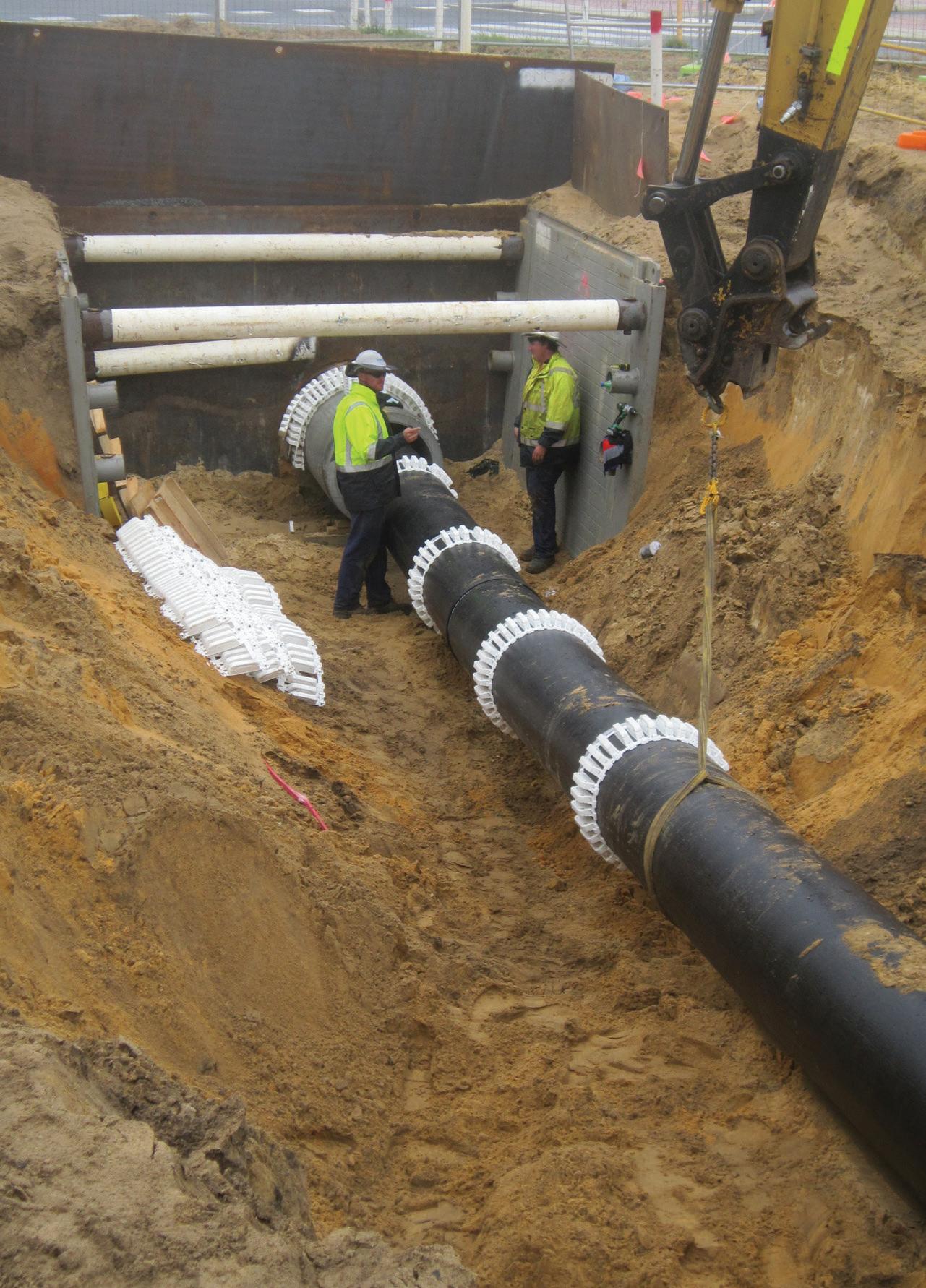


The Water Services Association of Australia (WSAA) has released its latest paper: Workforce Skills of the Future. WSAA and the Water Environment & Reuse Foundation (WE&RF) commissioned KPMG to help their members understand and prepare for future trends affecting the urban water industry and its workforces.
Clean water and sanitation are precious. The water sector has its own specific challenges in terms of reuse, recovery and regulation, but the sector is also affected by the global megatrends disrupting industries across the world. In this time of unprecedented change, it is difficult yet increasingly important to understand the potential impacts on the workforce and the skills required in the workforce of the future.
If unaddressed, the water sector may be left with significant skill gaps. By understanding trends and planning for the future, water utilities can create more engaging customer experiences, enhance the liveability of urban areas and provide greater development opportunities for their people.
The paper includes results across three continents, and provides insights on where the urban water industry is headed and the key enablers for success. A survey was conducted among water utilities in Australia, the United States and the United Kingdom to collect information on five key facets of the workforce: cost, capability, capacity, connectivity and compliance.
Key insights and themes were explored further during a two-day industry workshop, which focused on the
development of plausible future water scenarios. These scenarios were based on the potential impact and interaction between four key drivers for change of workforce skills in the water sector, being the customer, technology change, regulation and government, and climate change.
Its recommendations are essential for the industry as we undergo the transition to the digital future. Our workforce must develop and change, and strategic workforce planning is crucial in our ability to attract, retain and develop people in an increasingly competitive labour market. To be successful in an uncertain future, urban water utilities will need to proactively understand, influence and react to change.
The research results have identified two key foundation programs, which should be viewed as the priority next steps. The first is an Employee Value Proposition - a tailored and unique framework which encompasses employees’ intrinsic and extrinsic motivators in order to engage the desired level of time, effort and loyalty from the workforce.
The second is the development of a sector wide Strategic Workforce Plan - a sector wide plan will help the water sector and its workforce position itself to adapt and thrive in an uncertain future.
The Workforce Skills of the Future Paper is a great example of international collaboration that enables informed strategic planning for future opportunities, challenges and risks up to the year 2040, with an emphasis on customer focused outcomes.
Expertise in Plumbing Equipment, Tools, Materials and Safety Supplies







• Delivered on time & on spec

The Australian Government will provide $3 million in funding to the Cooperative Research Centre’s project stream to fund research and innovation into the Smart Lining for Pipes Project.
Executive Director of the Water Services Association of Australia (WSAA), Adam Lovell, said the funding was vital for water utilities to manage water and sewerage infrastructure.
“Many water and sewer pipes in our cities and towns are approaching the end of their life, and to completely replace them can cost thousands of dollars per metre. Water

utilities can potentially keep customer bills down by using new materials or new smart robotics and sensors in repairing pipes instead of replacing them,” Mr Lovell said.
The project is valued at a total of over $24 million and is expected to position Australia as a global leader in smart water infrastructure design, engineering, testing and management.
The project will see collaboration across the globe with 31 project partners focusing on new materials and technologies to increase the lifespan of these assets.
The world’s largest lithium ion battery has been fully installed in South Australia and has entered the regulatory testing phase.
Tesla Powerpacks, connected to Neoen’s Hornsdale Wind Farm, have now been fully installed on-site, with the testing phase ensuring the battery is optimised and meets AEMO and South Australian Government requirements.
Throughout this testing period, the battery will be providing system security services to South Australia.
In March 2017, the State Government announced its Energy Plan, with the objective of delivering cleaner, more affordable and more reliable energy to South Australians.
This plan included building the nation’s largest battery to store

“We are especially pleased to be working with an extensive range of national and international partners, including SMEs. This will keep customer bills down and reduce the ‘inconvenience’ cost to the community,” Mr Lovell said.
The global market opportunity for smart lining products is estimated at more than $60 billion over the next ten years, assuming linings defer ten per cent of pipe renewals.
Australia represents five per cent of this market so expanding market opportunities for Australian SMEs offers huge potential.
renewable energy and have backup power for when it is needed.
In July 2017, following a competitive process, French renewable energy company Neoen and US sustainable energy company Tesla were awarded the contract to deliver the project, which would be the world’s largest lithium ion battery and installed near Jamestown.
SA Premier, Jay Weatherill, said an enormous amount of work has gone in to delivering this project in such a short time.
“The world’s largest lithium ion battery will be an important part of our energy mix, and it sends the clearest message that South Australia will be a leader renewable energy with battery storage,” Mr Weatherill said.
For more energy news like this, as well as in-depth feature articles and expert commentary on Australia’s energy industry, visit the newly launched Energy site at www.energymagazine.com.au.





Advanced mobile and spatial solutions to solve complex asset and data management challenges.
Capture & Asset Mapping
Reduce your network risks and maintenance costs
Processing & Analysis
Make sense of your spatial data, whatever the source
Visualisation & Reporting
Deliver timely information to reduce errors and accelerate action
Mobile Workforce Management
Manage your mobile workforce and streamline operations
Data Maintenance
Reduce your costs without compromising service or safety
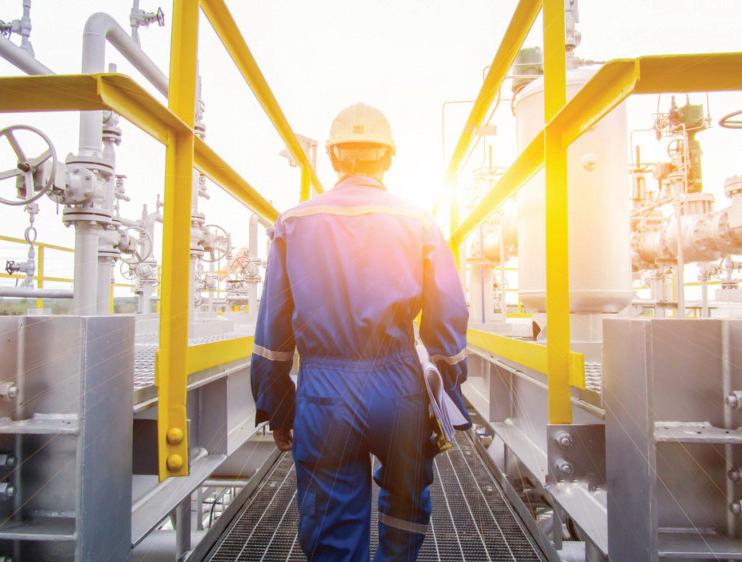
The ACCC released the second interim report into gas supply markets in Australia, focusing on the operation of the East Coast Gas Market where there are continuing immediate and long-term concerns.
The report found that over the past few months, Queensland LNG producers have diverted significant quantities of gas into the domestic market. LNG producers have contracted 42 petajoules (PJ) of gas under long-term gas supply agreements (GSAs) to domestic buyers for supply in 2018 since the September 2017 report.
Collectively, LNG producers reduced their LNG export contract and LNG feed gas requirements for 2018 by 34PJ and their planned LNG spot sales by 29PJ. LNG projects are still forecasting to sell 34PJ on the international LNG spot markets in 2018.
The bulk of the gas sales by LNG producers were to aggregators and retailers. While a substantial portion of this gas will be used to supply customers that were already contracted, the rest of the gas was used to enter into new GSAs with C&I users and gas powered generators (GPG). In total, aggregators and retailers have sold 32PJ of gas for

supply in 2018 since the September 2017 report.
As a result of additional supply being made available and a reduction in planned exports, there is now a lower likelihood of a supply shortfall in the East Coast Gas Market in 2018. However, the gas supply-demand balance in the market remains tight.
ACCC chairman, Rod Sims, said the gas supply shortage has had “a catastrophic effect on the Australian economy”.
“It’s meant that gas prices have gone up a lot — doubled, tripled, quadrupled for some businesses and some consumers,” Mr Sims said.
“And it meant that some companies just could not get gas, there just wasn’t enough gas.
“What we’ve seen is LNG producers have reduced exports to provide more gas to the domestic market, and that has overcome the shortfall, and that has seen prices for many companies fall from around $16 [per gigajoule] to around $8 to $12.
“It’s certainly a better picture, the market still has some problems, but it’s a much better picture now than we had a couple of months ago.”
For more energy news like this, as well as in-depth feature articles and expert commentary on Australia’s energy industry, visit the newly launched Energy site at www.energymagazine.com.au.


SPEED. PRECISION.
LOCAL PRODUCT SUPPORT.
THE VERMEER PD10
SOLAR PILE DRIVER IS YOUR SPRINGBOARD INTO LARGE SCALE SOLAR.
[ Speed ] Designed from the ground up for solar array installation, the PD10 brings cycle times down to unprecedented lows.
[ Precision ] Laser or optional GPS guidance and an innovative hammer design means outstanding accuracy, less pile damage—and less rework.
[ Local product support ] Get your project underway with the peace of mind that only the backing of a truly nationwide dealer support network can offer.
Contact your local Vermeer product specialist to learn more.

PD10 SOLAR PILE DRIVER. GET EQUIPPED.
Apaper released by Infrastructure Australia called for national urban water reform as utilities are set to come under increasing pressure from growth and climate change.
Reforming Urban Water: A national pathway for change addresses mounting challenges in the urban water industry, aims to provide a case for reform and outlines the potential costs of inaction. The report also establishes national objectives to guide reform and ensure the sector can meet future challenges, as well as identifies a pathway with clear recommendations.
Infrastructure Australia has recommended a three stage approach to reforming urban water:
1. This first stage is for the Australian Government to establish a national reform pathway by the end of 2018, including agreeing to a new national urban water reform plan, establishing an independent national reform body and using incentive payments to drive reforms
2. The second stage is to roll out nationally consistent reforms over the next five years. This includes refinements to regulation and governance in each state and territory, improvements to long-term planning and pricing frameworks, and enhanced collaboration between regulators


3. The final stage is to consider further reforms over time, such as moving to a national regulator and privatising urban water assets
Infrastructure Australia Chief Executive, Philip Davies, said that while reforms of this scale will take time to be rolled out, it is important that governments get on with the task of initiating reforms now.
“Across Australia many of our dams are relatively full, which gives us a rare window of opportunity for clear thinking and long-term planning to meet our future needs.
“Now is the time for governments to get on with the job of bringing urban water policy, regulation and governance up to speed so that it can meet the changing needs of Australians in the twenty-first century,” Mr Davies said.
WSAA’s Executive Director, Adam Lovell, said, “WSAA supports the calls from Infrastructure Australia for a new national urban water reform plan and an independent national urban water reform body.”
“It is gratifying to see the strong and growing consensus around urban water reform that has developed between governments, water utilities and the private sector. The recommendations from Infrastructure Australia are in line with the reforms WSAA has been championing on behalf of the industry and its customers,” Mr Lovell said.





A recycled water plant in Sunbury, a town in Melbourne’s north-west, is using innovative membrane technology to treat wastewater.
As part of a $53 million upgrade to the Sunbury Recycled Water Plant, wastewater will be filtered through hundreds of thousands of tiny strawlike membranes with holes ten times smaller than the smallest bacteria.
The upgrade will increase the plant’s treatment capacity from 6.5 million to 9.2 million litres of sewage per day.
“Thousands of these 2.6mm-wide
membranes, which look a bit like the strands of a mop, are packed into modules,” Western Water’s Managing Director, Neil Brennan, said.
“(In November 2017) we had cranes lifting 24 of the modules into place in the new membrane tank at the plant.”
“The surface area of the membranes combined is 43,200 square metres, which is more than double the size of the MCG.”
The membrane tank will filter wastewater through holes that are just 0.00003 of a millimetre wide, removing particles and bacteria to




produce exceptionally high quality recycled water.
“This is the first time we have used this innovative technology, which also takes up far less space than traditional filtration technology,” Mr Brennan said.
“The space-saving design has meant we can keep the upgraded plant within the same footprint as the original plant. We can also add more modules in future if needed.”
It will enable the plant to keep up with the rapidly growing population of Sunbury and Diggers Rest.

AGL has outlined plans to repurpose Liddell Power Station beyond its 2022 closure.
The New South Wales Generation Plan proposes a mix of high-efficiency gas peakers, renewables, battery storage and demand response, coupled with an efficiency upgrade at Bayswater Power Station and

conversion of generators at Liddell into synchronous condensers.
The feasibility of a pumped hydro project in the Hunter region is also being explored with the NSW Government.
Graeme Hunt, Chairman of AGL, said the plan demonstrates that old power plants can be replaced with a mixture

of new, cleaner technology, while improving reliability and affordability.
“Decisions for the investments are staged to enable flexibility to respond to the changing needs of the market and improvements in technology over the next five years,” Mr Hunt said.
The AGL Board has approved the commencement of efficiency improvements at Bayswater that will create more capacity without using additional fuel; ordering equipment to convert generators at Liddell to synchronous condensers; and the signing of contracts to purchase 300MW of generation from two new solar power stations to be developed by third parties in NSW.
An assessment of AGL’s plan found the replacement generation is more affordable at $83/MWh, compared with extending Liddell at $106/MWh.
The plan was also found to deliver reliable, dispatchable power for longer, due to a longer asset life of 15-30 years, compared with a Liddell extension of five years.
Independent analysis found an extension until 2027 would cost approximately $920 million.




•
The AGL Board also considered selling Liddell and determined that a sale would not be pursued as Liddell is currently needed to supply energy to its customers and will be repurposed to form part of its alternative generation post 2022.

For more energy news like this, as well as in-depth feature articles and expert commentary on Australia’s energy industry, visit the newly launched Energy site at www.energymagazine.com.au.

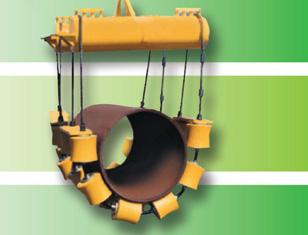







With so much change and uncertainty in Australia’s energy sector, it is important for the industry to think critically about what energy producers and retailers should be doing now to ensure a stable future.
Monkey Media, the team behind Utility Magazine, is launching Energy – a thought-leading, technology neutral magazine, developed to help the industry answer some of the critical questions it is currently grappling with.
Energy will be a sister publication to Utility, but will delve deeper into the issues and solutions for the entire energy industry chain in Australia.
Energy will look at the policies and politics affecting the industry but will always place the emphasis on outcomes rather than political point-scoring.
It is committed to helping the industry move forward and solve the so-called energy “trilemma” –establishing new forms of energy that are reliable, affordable and clean – without over-emphasising the role governments will play in finding the solution.
Energy will help to answer questions including:
• What are the energy sources of the future?
• How do we provide energy that is clean, affordable and reliable?
• How do we give customers what they want?
• How to we contend with disruption in the energy sector?
• How do we digitise our networks safely, securely and efficiently? These issues will be discussed through thought-leading editorial contributions from some of the best

and brightest minds in the energy industry.
We believe the future for the energy sector – while it looks considerably different than it has over its first century of existence – has never looked brighter. The opportunities are waiting to be taken advantage of, and Energy will be there, showing you how to best position yourself in energy’s brave new world.
Energy Magazine Issue One will launch in March 2018 and be published quarterly in March, June, September and November. Energy will also include an associated website with news updated daily, as well as a weekly newsletter.
To subscribe to Energy visit www.energymagazine.com.au.
For more energy news like this, as well as in-depth feature articles and expert commentary on Australia’s energy industry, visit the newly launched Energy site at www.energymagazine.com.au.
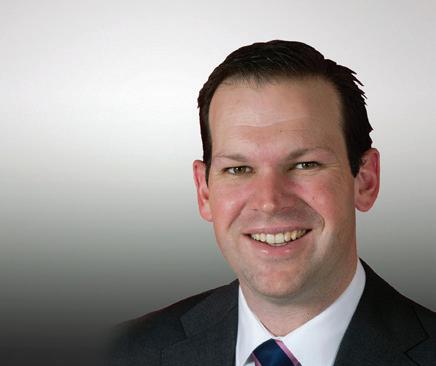
















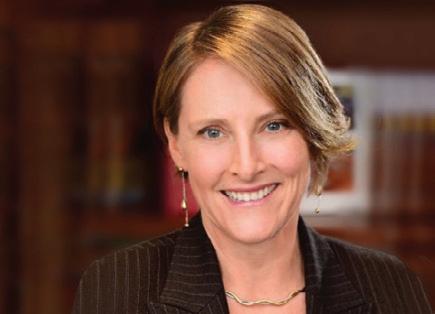



Australia’s most comprehensive domestic gas market event


The Australian Domestic Gas Outlook (ADGO) conference is the annual meeting place for stakeholders in Australia’s domestic gas industry, attracting over 250 senior managers each year.
It’s your opportunity to hear insights from industry CEOs, politicians, regulators and more.
Attend and discover how the industry is recalibrating itself to the new gas market dynamics, get the latest updates on gas market reform and stay ahead in these uncertain times.
To view the full speaker line up and agenda, visit the website.

Isle Utilities work with the water industry to assess new technologies and assist with their adoption into the workplace. Technologies such as high-res monitoring of pressurised sewer lines, transient event and leak detection, and low power, narrow bandwidth, long-range networks for the IoT are not only important for improving day-to-day business operations but also translate to more efficient IT systems and data management processes.

Isle Utilities first launched its Technology Approval Group (TAG) in the UK in 2005. The innovative platform is now available to utilities all over the world, including Australia. The aim of the TAG forum is to provide a platform to evaluate emerging technologies, share best practice, and collaborate on technology trials and other projects.
The Australian TAG forum is being run in partnership with the Water Services Association of Australia (WSAA), and its members consist of over 30 of Australia’s largest urban water utilities, including Sydney Water, Melbourne Water, SA Water and Western Water.
Managing Director, Tim Day, joined Isle Utilities Australia in 2014 after experience in a number of similar roles, most notably as Managing Director for eMeter APAC, a Silicon Valley clean tech company purchased by Siemens in 2011.
“What attracted me to the company was its focus on the adoption of innovative clean tech in the utility sector and, in doing this, their novel approach being funded by the end users of technology to source and implement technologies. This model means that Isle is independent and can be a trusted advisor as we do not take success fees from technology providers,” Mr Day said.
Mr Day explained that Isle Utilities will only look at a technology if there is, at minimum, a working prototype. This ensures there is something tangible to evaluate and customers find more value in being presented with technologies whose claims have already been validated.
“They must at least have a working prototype which we can evaluate both through getting an understanding of the technology and also validating their claims independently. For example, if a technology claims that they have done a trial with a utility, we have the global contacts in place to approach the utility to understand the scope of the project, the objectives and the outcomes,” Mr Day said.
“Isle’s employees are all highly qualified engineers and scientists with years of domain expertise. We use this technical and domain expertise to evaluate technologies both from a first principles perspective but also to independently validate their claims by checking through their proof points.”
Over the last 12 months, over 200 technologies were assessed through TAG. Around 70 per cent of technologies that present at TAG move forward with either trials, demonstrations or further research.
For the past ten years, Isle Utilities’ major focus has been the water sector, particularly the municipal water sector. They have also done work for the gas, electricity and agricultural sectors, and are looking at expanding into the resources sector as well.
“This benefits everyone as there are many technologies that get pigeon-holed into one sector or another and we can use our business model to help them cross over and also allow collaboration between non-competing sectors,” Mr Day commented.
He also said that knowing about the technology is one
thing but getting it adopted into a business, and getting them to realise the benefits, is key.
“Utilities are typically risk averse, with good reason, and find it difficult to engage all the necessary stakeholders early in a process. While they may run many trials they tend not to progress as they come up against barriers within the organisation,” Mr Day said.
“Everyone loses in that money is spent without a return and the technology provider gets burnt in the process. We provide an independent voice to ensure that technology vendors and end users in utilities do not communicate at cross purposes.
“It is typically difficult for a technology or utility company to understand each other's issues. Technology companies become frustrated as the pace of action may not be what they are used to as an agile startup and the utility companies become frustrated as they can’t make sense of the technology or see it as a technology trying to find a problem to solve.
“Isle can sit between the two and make sure the steps in moving the technology through the technology adoption model are done efficiently, with the correct checks and balances.”
Isle Utilities uses cloud-based services for the management of its data and all of the data that it has gathered is held on its TAG platform, which is available to all of its members.
“To date, Isle has evaluated over 4000 technologies so there is quite a list. We are currently upgrading this platform so that it is easier to search for the technologies that are there” Mr Day said.
“The first part of this we have called CATWizard, which is a tool for evaluating Condition Assessment Technologies for potable water pipes. Subscribers can search on multiple criteria to determine which technologies suit their purposes.”
The technologies are also reviewed by utilities from around the world, which keeps the information current and allows for global collaboration. Despite the huge number of technologies evaluated, Mr Day said that Isle Utilities deals with relatively low amounts of data compared to the water utilities they work with.
According to Mr Day, one of the main challenges with data collection is ensuring that it stays current and that there are strategies in place so that it remains relevant and valuable to the business.
“We are redeveloping our technology platform to ensure that a technology that was evaluated ten years ago has the most current information in our portal now, as no doubt there has been lots of changes given the technologies we are looking at are startups and would have been fully commercialised within that period,” Mr Day said.
“As such we are borrowing from areas like social media, and the latest in web design and architecture to present the technologies in a more accessible way and also keep the
information current by getting users of the technology to contribute to the information that keeps it fresh and current.”
As an organisation that comes across innovative and emerging technologies all the time, Isle Utilities are definitely seeing the impact of big data on traditional data management processes.
“What we are seeing more of is technologies that are disruptive to the traditional IT paradigm of holding all data behind a firewall. Operational technologies are being bundled using a software as a service (SaaS) model where data being generated is held in the cloud,” Mr Day said.
“This is obviously a challenge for utilities as the only way to get access to these technologies is to let go of the traditional view which is often supported by regulation. This is not to say that utilities are not adopting this way of managing their data as they are but it's how the paradigm shift is being managed that is important in regards to data access, transparency and security.”
Mr Day said that the biggest lesson for utilities to learn is that is very difficult to test for scale.
“Technology companies can build software with all of the architectural elements needed for scale but until you actually get there no-one really knows how scale will impact a business process or the technology that is coupled with it.
Embracing
“The lesson here is to be prepared for the worst outcome and scale your applications in a controlled manner if you have the opportunity to do so,” Mr Day said.




The need for utilities to go digital is generally understood, but the question of how to best go about digitising current paper based systems, such as incident reporting and safety systems, can present a challenge. One key decision when implementing an online management system is whether you should invest in a customised system, or buy an off-the-shelf solution that is ready to go.
Once a utility has made the decision to transition from manual, paper based forms and processes to fully automated, smart online systems, the next step is finding a management system that fits seamlessly into an organisation’s current structure.
With cost and time often being a key factor, implementing an off-the-shelf system can be seen as the easiest option as they have already been made and are ready to be implemented at any time. Off-the-shelf systems are developed to meet generic business needs and are focused towards a mass-market audience, rather than a specific sector or company.
This means off-the-shelf systems are likely to only meet a percentage of your needs, and have other features that are not needed.
However, highly customised systems, while specific to the needs of a business or utility, can be costly investments and might not be the right system for everyone.
One of the key factors that utilities and contractors must consider in order to determine what online management system will meet all the needs of their organisation, not just some, is whether
the system will fit into your current way of doing things.
More often than not, an off-the-shelf system requires an organisation to change their way of doing things to meet the system’s capabilities, rather than the software fitting in with the business.
There are ways to alter an off-theshelf system but this can be expensive and take more time than it’s worth. Off-the-shelf systems can also be slow to adapt to industry needs and any request submitted for enhancements may get ignored if it doesn't benefit the larger customer base.
This is where a customisable off-the-shelf solution offers the greatest benefits. This process allows organisations to start with a basic system and build it up with their specific customisations, so their management system has all the features they need and nothing that is unnecessary.
FiNAO is a solutions provider that works with businesses to digitise their existing paper based forms and processes, and create an online system offering automatically generated notifications, predetermined automated workflow and real-time reporting.
FiNAO’s point of difference is that it customises off-the-shelf solutions so businesses have a system that is tailored to their specific needs. FiNAO
Director, Terry Down, said FiNAO does this by starting off with its off-the-shelf PRIME system, and then adding features and modules as the business needs them.
“This modular platform, coupled with cloud hosting, provides a very flexible and scalable system that will grow and adapt as your business grows and your needs change.”

FiNAO’s customisable system was used recently by Linbeck Contractors, a construction, repair, maintenance and plumbing business servicing Australia’s water and gas industries.

Linbeck required an online management system that could automate its Mains to Meter (M2M) job acceptance, allocation, scheduling, management and reporting process.
Linbeck needed to be able to receive jobs from Maximo (Sydney Water’s Asset Management system) into a Linbeck system, which would allow a Linbeck administrator to review the job and assign it to a Linbeck crew, as well as view locations of crews and job status on a map in real time and allow the crew to complete job documentation on-site.
The system also had to keep Sydney Water updated with automated real-time status reports, and follow the Linbeck process procedure with regards to safety and business requirements such as SWMS.
Linbeck tried many off-the-shelf products but found it could not get the level of functionality and efficiency it desired, and realised it needed a customisable system.
“After some extensive trials and research we came across FiNAO and immediately we liked the functionality available from the base modules, but mostly we were interested in how the system could be tailored to suit our business and key projects,” said Joseph Lynch from Linbeck. Customised solutions can provide a competitive advantage and potentially the least disruption to your business model.
As a result, Linbeck were provided with a fully automated job workflow system that met its specific business requirements, complied with Sydney Water requirements, and provided a range of real-time reports for job progress, outcomes and billing. Using this system, Linbeck successfully processed over 1,000 jobs in the first few weeks.
Linbeck found the system easy to navigate and has been able to integrate it with key internal and external systems, which eliminated a number of paper forms and site packs, and provided a low cost mobility solution with all its data being available in real time on basically any device.
“The FiNAO team have helped to make the implementation and development process as painless as possible, we are pleased with the results and can see our system is clearly on the way to being what we require, one that is flexible and scalable enough to manage and integrate our WHSE, Quality, HR, Job and Project Management functions.”
– Joseph Lynch, Linbeck
Organisations need to consider that there might not be a system that exists in the market that meets all their specific business needs, so a bespoke system may be the only option. While there are pro’s and con’s to both options, the main thing to remember is to do your homework before you commit.
Organisations need to think about how they currently operate, from larger processes down to the terminology that employees use. The software solution that they choose must fit their particular business needs, otherwise it’s not the right solution.
Although a custom solution may have a high upfront cost, it has the potential to provide a greater return on investment and cause the least interruption to a business.
If an organisation finds an off-the-shelf system that fulfils all their needs, then this can be implemented. However, it’s essential that the long-term and future needs of a business are also considered.

If you want to partner with a stable, knowledgeable, experienced company to maximise your success and minimise your business risk, partner with FiNAO. For more information on how FiNAO can develop a customisable off-the-shelf solution for your business, head to finaomanagementsystems.com.au or contact Terry Down direct (terry@finao.com.au or 0413 481070).

How ‘making data work’ is central to unlocking the opportunities that come with digital disruption and technology innovation.
 by Igor Sadimenko EY Asia –Pacific EAM Regional Lead
by Igor Sadimenko EY Asia –Pacific EAM Regional Lead
The way electricity is generated and consumed is changing irreversibly toward a more distributed model. The future of our system is decarbonised, decentralised, digitised and democratised. The way we manage energy assets and asset data is also having to fundamentally change –and it’s happening faster than we think.
This distributed model requires a significant level of digitisation in order to work efficiently and effectively, as it relies much more on ‘many-to-many’ transactions between a growing variety of service delivery assets – from solar array and storage to smart meters and sensors.
Across the power and utilities sector, the shared digital architecture is being reconfigured and businesses will need to transition to a more inclusive and far reaching digital infrastructure, capable of far deeper levels of asset inclusion.
The Internet of Things (IoT), the proliferation of distributed energy resources, behind-the-meter connected devices and electric vehicles (EVs) are generating vast quantities of unstructured data. At the same time analytics and artificial intelligence (AI) – machine learning, image recognition and deep learning in particular – are transforming how asset data is collected, collated, analysed and leveraged.
AI can remove the need to start from a hypothesis – a common requirement in traditional analytics that has constrained thinking, making evolution an incremental and slow process – and instead look for and find new insights in well-worn data sets.
Image recognition, for example, can help identify anomalies, manage and predict the performance of grid assets. Whereas machine learning and deep learning can synthesize and model the impacts of numerous new technologies (EVs, batteries, drones, advanced metering systems to mention just a few) deploying in a far shorter timeframe than before.
Data informs every management decision throughout the asset lifecycle and supply chain. It needs to flow effectively and lead to actionable insight. The more an organisation values data and information as a strategic asset and a differentiator in its own right, the greater the efficacy of its asset management and the likelihood of maximising ROI.
Today, utility incumbents are often data rich but intelligence poor, collating vast amounts of asset data in asset registers, without necessarily linking it back to an asset strategy designed to support long-term business goals. This takes its toll on utility asset decision-making, often resulting in lackluster return on (asset) investment and value leakage.
Exercising tight planning and controls to manage data quality makes organisations far better equipped for timely, cost-effective interventions. But collecting and managing the right data throughout the asset lifecycle requires robust organisational discipline, particularly where large asset fleets are concerned, as these demands increase with the exponential growth in data volumes.

To turn asset management into asset excellence, leading organisations need to incorporate the following three considerations into their asset strategy:
1. Treat data as an asset class. Data and data culture need to be key priorities for the organisation. Data has strategic significance, can be leveraged and monetised, and requires appropriate management — so it should be valued as an asset in its own right. This means identifying, collecting and standardising asset data critical to decision-making; establishing governance and processes to manage information — how it is acquired, cleansed, stored, secured and evaluated; creating a data-driven culture with accountability around data; and taking a commercial view of data that prioritises investment and balances short and long-term costs and benefits.
2. Seek out opportunities to exploit data across the whole organisation. Data should be integrated across platforms — such as operational technology, finance and asset systems — to unlock additional insight and promote truly joined-up thinking. Where appropriate, organisations should partner with specialists to gain cost-effective access to new data and analytical capabilities
3. Pursue insight through enabling technologies and analytical capabilities.
Organisations need to commit to consistent investment and development of enabling technologies (such as analytic, AI, augmented reality, blockchain, etc.) across the P&U value chain.
Digital disruption and technology innovation provides not only the motivation but also the means for utilities to make the data work for them and reinvent the way energy assets perform in a sector undergoing rapid transformation.
Those that embrace digital asset management as a gateway to better decision-making and a fundamental driver of utility value will gain competitive advantage and outperform their peers. Those that don’t face a widening capability and stakeholder expectation gap on performance, service and cost, because with disruption also come new entrants – often from other sectors – that are tech savvy, agile, aggressive and cash rich.
For that reason, asset excellence must be prioritised on the board agenda to enable the appropriate cultural, strategy and policy changes across the business. For asset intensive P&U businesses, harnessing the power of data and asset management has never been more important to reinvent themselves as a disruptor, not the disrupted.
The views expressed in this article are the views of the authors, not Ernst & Young. This article provides general information, does not constitute advice and should not be relied on as such. Professional advice should be sought prior to any action being taken in reliance on any of the information. Liability limited by a scheme approved under Professional Standards Legislation.
Data is now a crucial part of the decision-making process, with the ability to report on events as they occur now more important than ever. NHP offers a variety of analytics and reporting solutions that ensure your data is always visible to those who need it.

Ensuring the right operational information gets to the right people in your organisation at the right time is becoming increasingly challenging. With the likely reality of scattered data sources, legacy equipment with limited integration capability, and insufficient security, an organisation’s ability to get data into the hands of their decision makers has never been more critical. Add to that the varied corporate and IT requirements, and the puzzle becomes even more complex.
NHP delivers reporting and analytics solutions for operators using FactoryTalk® Analytics for Machines by Rockwell Automation. This software easily integrates with Allen Bradley® controllers, gathering important data in the background and reporting on machine performance in real time for machines located anywhere in the world.
The web-based application delivers user-specific reports of real-time Key Performance Indicators (KPIs) to decision makers. This contextualised information, gathered from what used to be separate systems, allows decision makers to take action as events occur on the plant floor.
The Azure cloud application integrates seamlessly with
The web-based application delivers user-specific reports of real time Key Performance Indicators (KPIs) to decision makers. This contextualised information, gathered from what used to be separate systems, allows decision makers to take action as events occur on the plant floor.
the machine, turning your assets into true Industrial Internet of Things (IIoT) devices. This ability to monitor operation remotely allows the machine builder to constantly adapt and enhance your machine’s performance, even at a distance.
Moving from a mindset of infrequent, major machine upgrades, to one of continuous improvement of assets throughout their lifetime, will fundamentally change your approach to selecting equipment in the future.
The benefits of improved data visibility is by no means limited to new machines. NHP offers enterprise-wide, locally hosted reporting and analytics solutions via FactoryTalk® VantagePoint and FactoryTalk® Metrics. These platforms connect to Allen-Bradley® Automation Controllers, Historians and SCADA to collect, interpret, display and report plant-wide data easily and meaningfully.
Whether management needs a site-wide real-time dashboard and regular reports sent directly to their inbox, or maintenance staff need access to a granular, detailed view of a machine’s performance on their handheld device, NHP can customise the perfect solution to improve your operation using the data you already own.

When it comes to bolstering your water and waste water capabilities, it’s not just about accessing and aggregating data, it’s about making that data work for you. Control systems are inherently data-heavy, but that data provides no value unless it’s transformed into information.

NHP
Rockwell Automation’s FactoryTalk®
Analytics for devices is a hardened appliance that helps avoid costly downtime and improve productivity by proactively identifying device health.
From a sensor to machines all the way through your enterprise, NHP brings to the local market complete industrial automation solutions that will lay the foundation for the future direction of your IIoT (Industrial Internet of Things) strategy.
To implement NHP’s scalable analytics, visit nhp.com.au/more/FactoryTalk

Icon Water has been delivering water and sewerage services to the nation’s capital and surrounding areas for over 100 years. More recently, the utility has been focusing on modernising its systems and processes, recognising the importance of big data and analytics in informing business decisions. It’s this data-driven approach that won Icon Water the 2017 Australian Water Association’s Infrastructure Project Innovation Award.
Icon Water service Australia’s largest inland city with a reach of roughly 400,000 people through 6,600km of water and sewerage pipes and an asset portfolio worth over $2 billion.
Last year, Icon Water, in collaboration with industry partners SEAMS and AECOM, won the 2017 Asset Management Council Cost, Risk and Performance Excellence Award and the ACT Australian Water Association’s Infrastructure Project Innovation Award for its customercentric approach to its Sewer Network Maintenance program using big data.
These awards recognise how Icon Water has applied Enterprise Decision Analytics to develop its Sewer Network Maintenance program to achieve a balance between cost, risk and performance objectives.
The project is an example of an emerging area in asset management using big data and advanced analytics to inform investment decisions. SEAMS UK and AECOM developed the asset management model in conjunction with the University of Exeter in the UK. The model has been used widely with UK utilities, including Scottish Water, Yorkshire Water, Sever Trent Water and South West Water - but is a first for Australia.
Enterprise Decision Analytics allows Icon Water to effectively locate high risk sewer pipes in the network to ensure they can minimise impact to customers. It allows for efficiency improvements in completing maintenance activities and monitor the “hit rate” for locating pipes to repair or replace through CCTV work investigation.
The greatest value comes from being able to model customer impact of sewer breaks and blockages. This means Icon Water can estimate the probability and impact of sewerage incidents to customers, which will allow prioritisation of works to proactively prevent incidents.
Icon Water’s General Manager Infrastructure Services, Ray Hezkial, highlights the benefit to utilities when they put the needs of the customer first.
“Previously, modelling for renewal works was heavily influenced by the age of the infrastructure, not necessarily on what impact it might have on the customer," Mr Hezkial said.
“The assumption was that the older the pipe, the more risk of it breaking. What we found with our Enterprise Decision Analytics modelling is that this assumed relationship was not the case.
“The Enterprise Decision Analytics model highlighted that our water and sewerage pipes laid in the 1960’s-1970’s were more likely to break or block and have a greater impact on customers than our pipes that are closer to 100 years old.
“Going forward our mains renewal program is now based on our award winning Enterprise Decision Analytics which ensures we can proactively minimise impacts to our customers by more effectively targeting areas that are susceptible to failure.
“Our targeted sewer mains renewal program has already reduced blockages by 60 per cent since 2008, more than double our original target.
“Our water and sewer mains renewal program in 2018 will be one of our bigger years, with over 26km of pipe in over 40 suburbs across Canberra to be replaced before 30 June.”


Mr Hezkial highlighted the focus of Icon Water to ensure its technology systems and processes stay modern to continue to deliver value for customers.
“The next three years will be significant for Icon Water. We gave ourselves the mandate in our Enterprise Asset Management Strategy to maximise value to customers by balancing cost, risk and performance," Mr Hezkial said.
“A major deliverable in that strategy is the continuous improvement of asset information and data systems and the renewal of our asset and works management system.
“To ensure we continue doing great work for our community it is important we continually improve our systems and processes, and develop our people in the skills to use them."





Edge Underground is a precision microtunnelling contractor that operates in Australia and the USA. With a focus on innovative technology and expertise, Edge Underground designs and enhances the performance of trenchless equipment.
• Microtunnelling
• Pipe Jacking
• Thrust Boring
• Laser Tunnel Boring

The main game at Taggle Systems is the low-cost collection and delivery of data for our water service provider customers. So, it was with some excitement that, just before Christmas 2017, we reached the milestone of delivering one billion domestic water meter readings in a calendar year for the first time.
As exciting as it was then, and thinking about it now as we put our heads down for 2018, we realise there’s a very long way to go.
Depending on who you ask, we estimate there’s about 10 million domestic water meters in Australia, give or take, of which we currently collect hourly water consumption data from about 115,000. That’s less than one per cent of the national fleet.
But that’s just water meters. When you look deeper into the Taggle ecosystem, you begin to realise that the scope of what we do extends way beyond simple water meters and that the potential for low-cost data acquisition using our LPWAN within the water sector is enormous.
SCADA has long been the monitoring and control hub for water utilities and will continue to be so for many years to come. What’s changing though is the availability of additional, what you might call secondary data, that provides much wider context for what is seen through a traditional SCADA system. Operational situations can now be seen through a wider lens which allows for better decision-making with greater certainty.
Taggle’s Low Power Wide Area Networks now enables the collection of data from a variety of devices that previously was uneconomical. We have established compatibility with equipment and software from well-known suppliers such as Siemens, ABB, Krohne, Itron, Enware, Schneider Electric, Evoqua, Honeywell/Elster, Hyquest, Vaisala, Davis Instruments, Tech One, Civica and others to create what might be described as a Taggle ecosystem.
Data collected in relation to water flow, water pressure, water quality, barometric pressure, wind speed and direction,
rainfall, sewer overflow, stormwater and flooding all add to the richness of the information to be seen in SCADA and other platforms.
The exploration of this data, looking at it from different angles and in different combinations, is already providing new insights into how water supply networks behave and how they might be improved.
To make all of this data as accessible as possible, we provide open standard delivery options such as DNP3, MQTT, AMQP, REST web-services, HyperCat and ODBC. Future developments will see OPC-UA added to the list. DNP3, in particular, should be of great interest as it is the de facto communications protocol for Australia’s water-related SCADA systems.
HyperCat, widely seen as the up-and-coming API protocol, will enable a lot of a water utility’s data to be shared with other users. As an example, rainfall data collected from densely distributed low-cost rain gauges can be used for context within a SCADA system while, at the same time, be available for use in hydraulic modelling, flood prediction and sewer network monitoring within the water supply organisation.
External users could also have access and the relatively low-quality rainfall data could be used to augment the more accurate data collected by, for example, the Bureau of Meteorology, to provide more informative trend information. Or it could be used by local farmers to improve their management of soil moisture for their crop production.
All of these are not just possibilities. They are available now.
And we’re just getting started.
Platinum Sponsor:
August 20 -23, 2018
Gold Coast Convention and Exhibition Centre
Queensland

Join fellow colleagues from several Oceania nations for the inaugural damage prevention industry conference to educate stakeholders on damage prevention and safe excavation. A showcase of best practice and international learnings for damage prevention efforts on underground assets and essential infrastructure.
Gold Sponsor:
Supported by:

Founding Sponsors:
•Plenary Sessions
•Networking Functions
OceaniaDPC.com
Owned
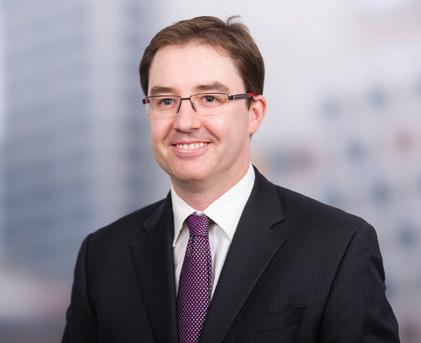 by Roger Jeffrey, utilities sector specialist and consulting partner at Deloitte
by Roger Jeffrey, utilities sector specialist and consulting partner at Deloitte

The impact of distributed generation on residential customers is currently a hotly debated topic. Driven by the continued evolution of battery storage, improvements in solar efficiency and newer microgrid technologies, the spectrum in opinions of when the majority of residential customers will go off-grid ranges from a few years to several decades.
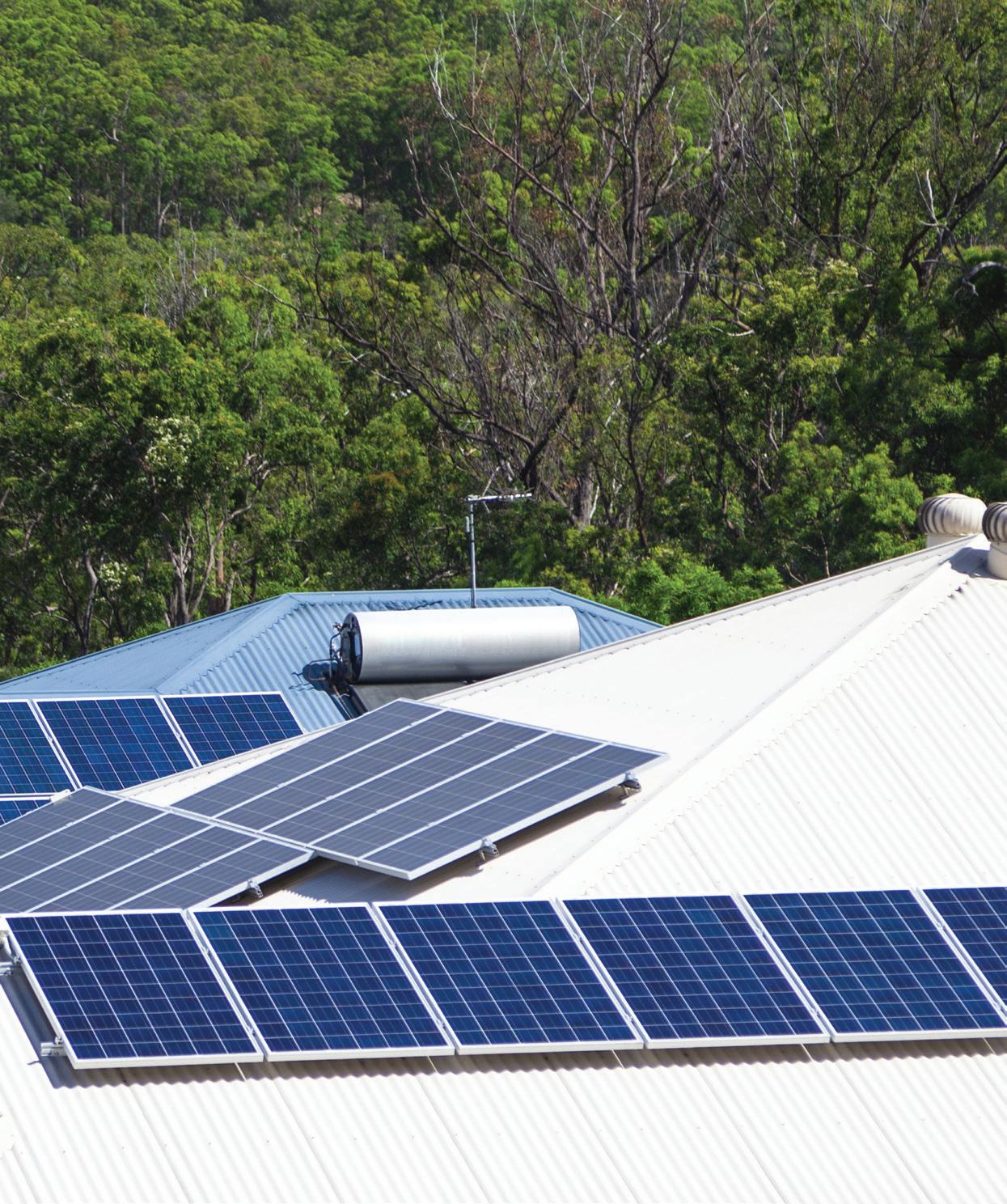
SWhat would it take for residential customers to go off-grid?
o what would it take for the majority of residential customers to go off-grid? There are a number of elements that need to be addressed and key challenges identified that would have to be overcome to accelerate adoption. Some of these include:
For many residential customers, the cost to procure and maintain microgrid solutions are perceived to be prohibitive. Significant cost reductions combined with improved efficiency in solar and battery will definitely increase adoption, however, government incentives or regulatory interventions will still be required for many customers, particularly for lower socio-economic groups.
‘Microgrid as a service’, where customers pay a regular fee and lock into a contract similar to a mobile plan, already exists, although take up so far has been low. The continued reduction in the overall cost, as well as more competition from traditional and nontraditional providers, should improve adoption of this offering.
Community microgrid sites significantly reduce the cost by sharing infrastructure and solar. Increasingly, developers are becoming generators for new estates and buildings which accelerate community grid solutions. Project Brooklyn in New York is a great example of this already happening.
There will always be reasons why customers are too busy to make the switch. A major black swan event, like the blackouts in South Australia, may drive customers to look for alternatives.
Accelerators will include the advancement of technologies, where a simple voice command will authorise required services. Others may include the increased role of aggregators and government regulations to improve the transparency of current tariffs and
alternative cheaper options. Simplicity to make the change is essential.
New house construction where micro-generation is mandatory will make an impact. For existing homes, government regulations, incentives for landlords, or shared solar schemes will be required.
It may eventually become feasible to develop ‘plug and play’ solutions. Regulatory and safety concerns will need to be managed, but these are not insurmountable. Why couldn’t solar panels be plugged into existing construction frameworks which landlords were mandated to fix to the top of house roofs?
Microgrids are still new, but rapidly maturing. Current technological limits mean the physical size of batteries and solar panels prohibit many households from deploying the amount required to meet their needs, though we are familiar with how rapidly technology can advance. It will happen faster than most people predict given the global investment occurring at present, particularly in China.
Global standards will need to be agreed and billions in research and development spent, but the size of the prize for successful providers is enormous. Limitations on materials required for batteries may slow progress in the short-term, but substitutes no doubt will be quickly found.
Solar power is great, but how do you meet demand at night? Time shifting of power generation will be required to meet peak demands.
The advancement of battery storage and technologies that allow power usage to be deferred to peak power generation times will be critical drivers for this success, but they are still


realistically three to four years away from widespread adoption. The ability to share excess electricity between neighbours, whilst a potential game changer, will be subject to a whole host of regulatory requirements.
Customers are used to incumbents automatically fixing outages that occur, but what happens when a massive storm hits that impacts a number of houses, or the batteries fail? Who will provide the operational support to restore power? Customers need confidence that if things go wrong, power will be restored quickly; support and maintenance plans will be important.
There are numerous regulations that need to be overcome before mass market adoption becomes mainstream. Changes to existing regulations to balance risk, safety and cost, with ease of deployment are required. New regulations to deal with emerging trends such as blockchain, electric vehicle charging, peer-to-peer lending, renewables on roofs, and data ownership will need to be created.
Customers need to trust the products they are purchasing are durable and the providers will survive and honour any warranty issues. They need confidence the performance of microgrid solutions won’t rapidly deteriorate over time requiring additional, ongoing and expensive upgrades. Solutions that show the performance of microgrid technologies
and how to optimise them must be a standard.
Governments and suppliers would need to provide certainty to the market that customers would not retrospectively be subject to additional charges should they go off-grid, for example new charges to cover the diminishing number of customers who have to share the burden of those leaving the grid.
Governments and private enterprise have invested billions of dollars in building and maintaining networks. The financial implications of stranded assets, and the loss of revenue for incumbents and the government would be substantial.
Incumbents would need to quickly adapt to a world of mass market adoption by introducing new business models that may include selling and/or maintaining solutions and warranties. For utilities with long-term government leases, the response would depend on the contract and any potential guarantees of supply. The impact on government revenue would need to be modelled to balance increased revenue from providers of off-grid solutions, with the loss of revenue from incumbents.
There will always be customers who don’t want to change no matter how good the deal. At the very least, legislation to mandate solutions, word of mouth and proven solutions will be required to win over the final resistors.
Whilst there will continue to be lots of discussion about the impact of batteries, solar and more complete micro-generation solutions, the reality is there are numerous obstacles that must be overcome before the majority of residential customers go off-grid. It will take many years, if not decades. In the meantime, the most likely scenarios leading the way will be early adopters, more remote locations and community grids whilst the general population take a wait and see approach and regularly check the cost, benefit, risk equation.


Energy Queensland’s new business Yurika has built Australia’s biggest Virtual Power Plant. Here, Executive General Manager, Charles Rattray, explains why it is a game changer for the industry, market participants and customers.

In listening to customers and visiting communities from the Torres Strait to Tasmania, it is clear to me that affordability is the biggest issue. Before we can work out the most cost-effective, innovative and simple energy solutions, we need to speak with customers to understand their challenges.
One solution is to reduce their overall demand or energy usage at high price times. We have an innovative solution that works – a Virtual Power Plant (VPP). VPPs save customers money by avoiding some demand charges, avoiding peak price events or by selling their capacity into the wholesale market for additional revenue or to support networks in some areas.
Virtual Power Plants (VPPs) help to optimise distributed energy resources (DER) to maximise their value for the VPP user and provide other market benefits, taking into consideration the operational constraints of the underlying DERs, the prevailing markets and physical condition of networks.
In the Yurika VPP, we utilise a cloud-based, load control platform which provides visibility and remote control of DER, connected to the VPP through Internet of Things devices. There are a number of different software platforms in the market. We opted for Australian company GreenSync’s technology, which is DER agnostic.
Most VPPs have effectively been born out of a fleet management system for whatever kind of asset they have been asked to switch. It is a logical evolution from fleet management to a VPP.
Recognising the need for DER and devices that support them, engineering companies built physical devices in order to fill a gap in the market.
It soon became clear that those assets were worth more coordinated together, not only in terms of value but also in the additional services they could offer. All of a sudden, the product offering has had to become more sophisticated.
If you had a choice between a battery that could be installed, but you had to go out and check on it every six months, or a battery that was internet connected which you could monitor and control as frequently as needed and understand how it was performing or remotely re-configure it – there is clearly a lot more value for the user in the second option.
The value of a VPP, compared to a regular power plant, is the cost of acquisition and that it utilises assets that have already been purchased and deployed.
At the end of the day, both regular power plants and VPPs are trying to help balance supply and demand. A VPP is used to increase supply through smaller assets rather than large power stations, or decrease demand in terms of curtailing load.
The net impact on the system is the same, albeit with lower capital requirements, and the VPP allows you to aggregate many smaller devices, which may be more economic for the end customer than the large capital requirements to build a regular power station.
There are clearly environmental benefits as well. Most traditional power stations are currently burning fossil fuels, be that gas or coal or some other fuel, whereas most VPPs can assist with the uptake of renewable technologies.
AGL’s decision to close the aging Liddell Power Station in 2020 is a sign of the times. Regardless of the politics, regardless of the environmental issues, from an economic point-of-view it is fast becoming cheaper to roll out grid-scale renewables and soon battery storage will be widespread.
Because of the inherent intermittency of wind and solar, we need to balance them out with flexible loads in addition to the use of storage. As the supply fluctuates due to environmental conditions, we can tap into additional generation assets, like storage, or reduce demand through industrial processes, agricultural processes and smaller things such as air-conditioning systems or pumping loads.
The real advantage of pairing those two things in a VPP is that you can actually create a much firmer generation product because you can remove the intermittency associated with those assets, firming up that portfolio over time.
The future is about bringing as much flexibility into the grid as we possibly can to support renewables. VPPs require and complement the grid.
Furthermore, a significant strength of a VPP is that it aggregates loads and supply which have disaggregated locations. It’s made up of individual DER working in a coordinated way, and the only way they can be coordinated is if they’re physically connected.
That is where the grid comes in – that’s the physical connection, that’s how we tie this whole thing together, it is a physical system. It is the physics of the electrons powering our society. You need that physical connection in order for it to work.
That’s why the future of the distribution business is incredibly bright, albeit in newer ways as new markets emerge. Those networks will effectively form the internet of energy.
I cannot see any major roadblocks and certainly no technical impediments to the success of VPPs in bringing value to communities. It’s really about how quickly large companies in our sector can get their heads and strategies around evolving towards where the future is going.
For Yurika, part of the Energy Queensland Group, innovation is a core value. Our core business is the safe delivery of affordable, reliable and sustainable energy solutions, in partnership with our customers and communities. I see this ground-breaking VPP as a shining example of both, and a beacon for the energy industry.
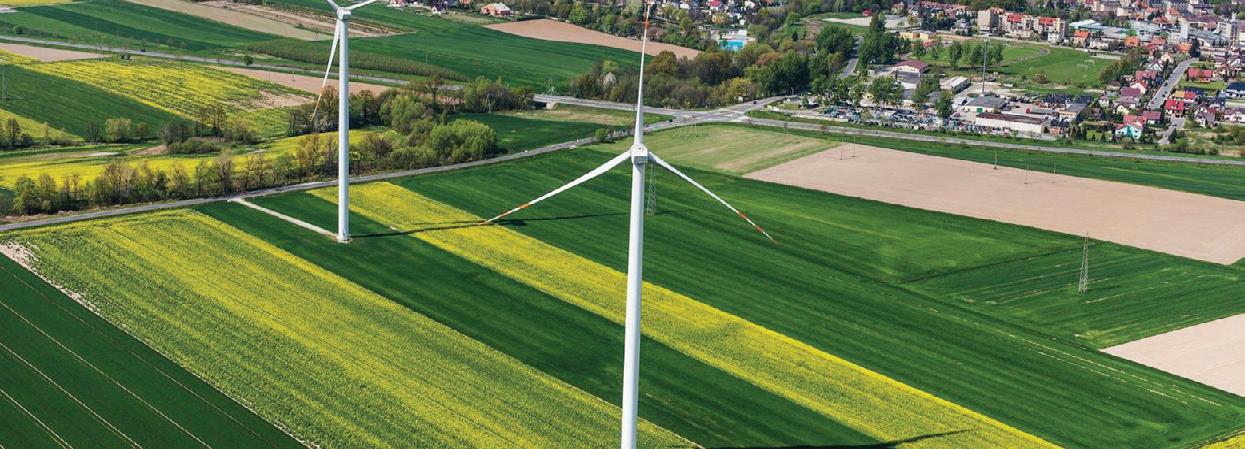
Increased levels of clean, locally generated electricity and rapid technological change mean that customers want better and fairer solutions for their power. In order to stay relevant and not get left behind, electricity retailers need to reinvent their relationships with customers.

Customers are becoming more concerned about their power bills and are investing more and more into technologies that allow them to better manage their electricity use such as rooftop solar, batteries, and other tools that allow them to monitor and control household appliances. Modern customers also care about more than just themselves, and are looking for ways to be part of the solution to global energy problems, rather than adding to the problem.
The dramatic and continued drop in costs of technologies like solar PV has also impacted energy markets with onsite, utility or community-scale generation projects now becoming a genuine option for commercial and community organisations.
The challenge then, for retailers, is to work out how to fit into this changing environment and provide customers with what they want.
This new generation of energy customer wants things like:
• Freedom to pick and choose how they interact with the energy market to make it work for them and their lifestyle
• Accessibility to see their usage and daily charges via phone apps
• Community sharing to make a positive difference
Our Energy works in partnership with retailers and customers to bridge the gap between the old retail model and new customer expectations.
For example, Our Energy’s Lemonade is a white label tool for retailers - a digital marketplace which creates virtual local energy markets that operate alongside traditional systems.
Lemonade allows customers to buy, sell or gift clean, local energy with their community, and helps retailers improve acquisition and retention results in a rapidly changing business environment
Lemonade provides customers with a digital experience that is simple, accessible and transparent at no additional cost. Delivered under a software-as-a-service model, a retailer adopting Lemonade retains its customer, billing and market reconciliation responsibilities.
Lemonade’s focus is on tying individuals into actual communities, not virtual ones. For example, families can gift energy from their home solar system to their child’s school, buy energy from the community wind or solar farm, sell energy to neighbours or give it as a fundraiser prize for a local club.
By building communities of customers, Lemonade can help retailers in two key ways:
1. Firmly aligns the brand with the values and behaviours of a new and expanding generation of customers; freedom, accessibility and community
2. By making customers ‘stickier’, allowing them to choose community over commodity. Being part of a community makes them more reluctant to switch as they won’t just be leaving a retailer, but their community as well.
By partnering with Our Energy, and putting communities at the heart of rapidly evolving digital, decentralised and decarbonised energy systems, retailers can unlock new opportunities in the face of unprecedented technological change.
If you’d like to learn more about working with Our Energy, including running pilots of Lemonade, contact team@ourenergy.co.nz.
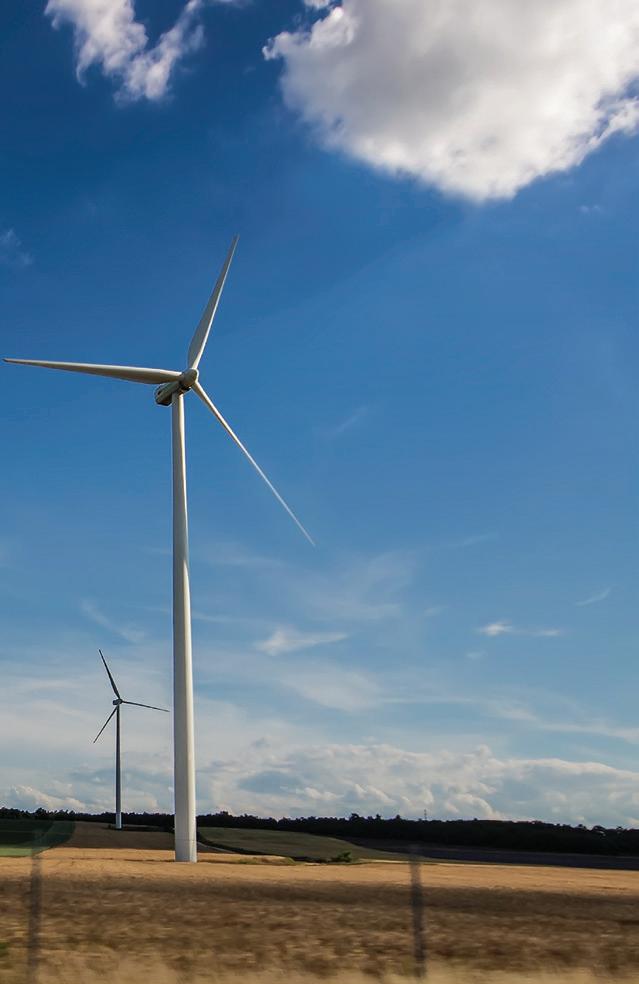
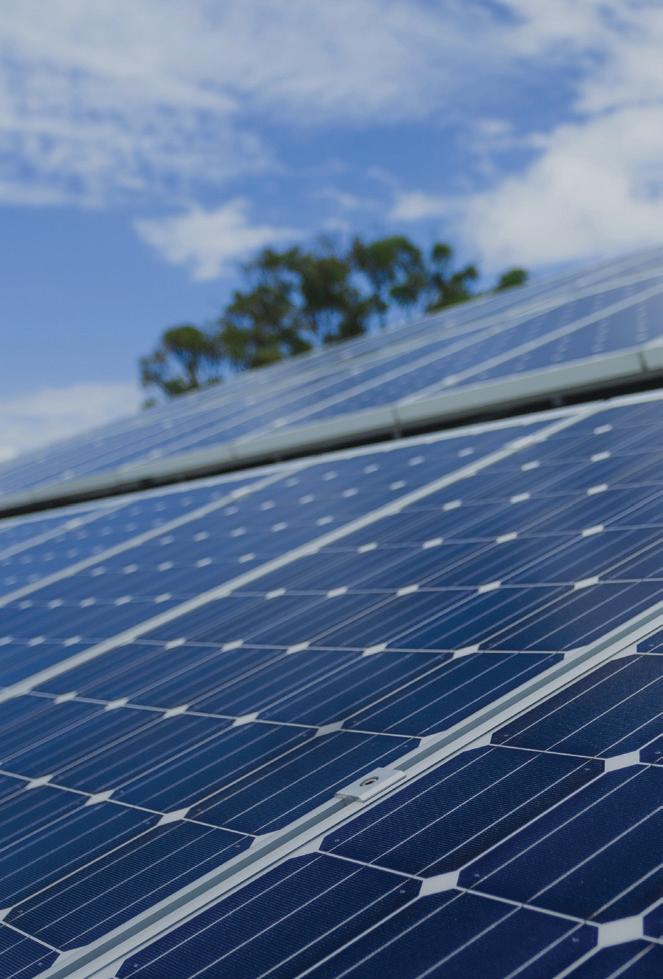
A new transformer was recently delivered and installed at AusNet Services’ Richmond Terminal Station with detailed planning and careful stakeholder management proving to be vital to the project’s success.
The new transformer is part of the Richmond Terminal Station rebuild, involving the replacement of the 22kV, 66kV and 220kV Air Insulated Switchgear (AIS) with a mixture of AIS and Gas Insulated Switchgear (GIS), along with constructing new buildings to house the switchgear, replacing old transformers and reconfiguring the site layout.
While the rebuild takes place, the terminal station must continue to supply electricity 24 hours a day, seven days a week, which makes the delivery and installation of a new transformer extremely challenging.
As AusNet Services’ delivery partner, Zinfra’s role in the transformer delivery was the coordination of all the stakeholders involved, to ensure alignment of the many moving parts in this large, complex, brownfield project.
Delivery of the single new transformer, weighing 279 tonnes (or roughly 46 elephants) required months of planning and preparation. Multiply these preparations over the removal and installation of four transformers and this extrapolates to weeks of work just for this aspect of the project.
Planning for a new transformer to be transported to site is a major logistical exercise that starts at least three months before the delivery date and involves a number of vital stakeholders including VicRoads, local councils, delivery partners and local residents.
AusNet Services notified local residents of a ‘no parking’ zone on the streets mapped out on the transport route six weeks before the delivery date and CitiPower and Yarra Trams were asked to lift their powerlines and tram lines so the truck could safely transport the transformer.
Over Dimensional Lift and Shift (ODLS), a specialised transport company, had their trucks certified to ensure the weight of the transformer could be tolerated by the trucks. For this job, a new trailer had to be purchased to extend the length of the truck. Additionally roads and bridges along the route had to be weight checked and tested.
The logistical challenges didn’t stop there. Since there is no crane large enough for this job, once the transformer arrived on site, it was carefully manoeuvred around the live brownfield site, and then set down on specially installed tracks. The heavy equipment was then ‘skated’ along the tracks, and shifted into the transformer bays using hydraulics. This last piece of the process can take up to three working days to perform.
When the new transformer was installed and commissioned, the old transformer was removed and the whole logistics process was performed in reverse. The old transformer was stripped down to parts for reuse and recycling, and the steel core was sent to China where it will be converted into smaller transformers and re-used.
The Richmond Terminal Station rebuild is part of AusNet Services’ Edison Project, which involves the rebuild and upgrade of the Richmond, Brunswick and West Melbourne terminal stations over a nine-year period. The project will secure the power supply for Melbourne’s growing inner suburbs and central business district.
AusNet Services and its delivery partners are on track to complete the project by the end of 2018.

THE FACE OF RICHMOND TERMINAL STATION IS BEING MODERNISED. AS THE REBUILD CONTINUES, MORE AIR INSULATED SWITCHGEAR IS MOVING INTO BUILDINGS AS GAS INSULATED SWITCHGEAR.
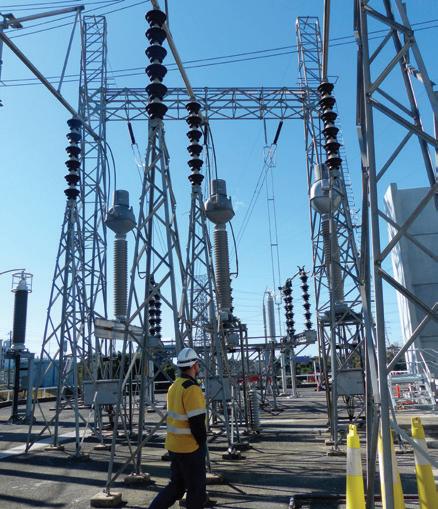
“The decision to appoint Zinfra as the primary contractor on a number of ActewAGL’s major projects was easy We chose them based on their extensive experience in high pressure gas pipeline and facility construction and their reputation for delivering.
They didn’t disappoint. Their ability to deal with challenging urban environments and deliver innovative solutions, whilst maintaining station operation, was second to none. In our experience, they have delivered fully operational upgrades safely, on time and on budget. I wouldn’t hesitate to work with them again”.

www.zinfra.com.au

The digitisation of utilities is the greatest challenges currently facing the sector, and utilities must keep up or risk being left behind. Digitisation should be seen as an exciting opportunity to improve processes, reduce costs, maximise safety and innovative procedures. Utilities must be willing to step up and embrace the change.
Digital Utilities 2018 has been created to do just that - provide delegates with the tools needed to use digital technologies to place their utilities at the forefront of the digital revolution. The two day conference will feature a lineup of expert speakers from water and power utilities, including CEOs, CIOs, Heads of Digital, consultants, industry associations and government representatives.
This is a must-attend event for anyone who wants to learn how their organisation can evolve into a modern, dynamic utility.

Digital Utilities 2018 , running from 19-20 April in Melbourne, is the premier event for anyone working in the utility industry and grappling with the momentous impacts of digital technologies. Combining a conference, exhibition and awards gala dinner, delegates will hear from senior figures and industry experts at Australian water and power utilities about the digital technologies they’re implementing, the challenges they have faced and the lessons they’ve learned.
Day One of the conference will feature individual presentations from key experts that relate to all aspects of digitisation.
Day Two will be split into four streams:
1. Using digital technologies to improve customer relationships
2. The role of renewables in our digital future
3. Achieving cyber security resilience in a digital environment
4. Modernising the network for the digital age
The Day Two streams will be presented as long-form panel sessions so speakers can debate and delve deeper into these issues. The conference will also include two structured networking sessions which will guarantee introductions to like-minded colleagues and speakers. This is in addition to multiple networking lunches and breaks for a more relaxed atmosphere.
PULLMAN HOTEL, ALBERT PARK MELBOURNE















Between the 1950s and 1980s, many landfill sites were capped, rehabilitated and redeveloped for parklands or industrial purposes. A requirement of these landfill closures was to ensure ongoing monitoring of legacy gas levels to make sure they didn’t migrate above ground. Thermo Fisher Scientific has developed a range of technologies to perform this monitoring remotely, reducing labour costs.
Methane is the major component of gas generated by decomposing organic wastes in landfills. Landfill sites can continue to produce gas for decades after closure, and in some cases this can be detected above ground.
Thermo Fisher was contacted by a client in Queensland who required remote access to their monitoring data and a remote alarm capability.
Preliminary tests at some of their sites had indicated that methane levels exceeded predicted values, but the data was only available when manually retrieved by operators after a site visit.
Data was typically measured over a six to 12 week period and used to help assess the condition of the infrastructure
Thermo Fisher proposed two technologies: the RAE MeshGuard Gas Detection, which is designed for rapid deployment in conjunction with Meshguard EC remote wireless gas sensors, and the DataTaker DT80M, a robust, stand-alone, low power data logger with a built-in 3G modem.
The RAE MeshGuard Gas Detection is a stand-alone system with no telemetry capability so the DataTaker was added to enable a complete wireless monitoring solution.
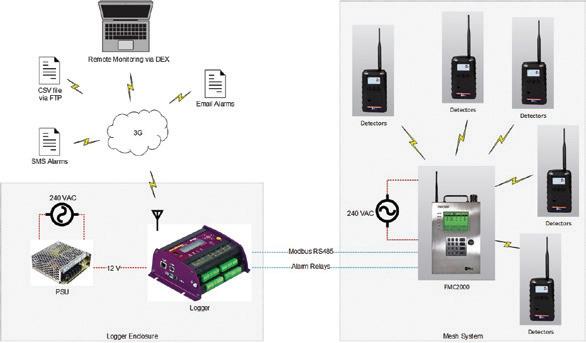
The gas detector comes with five methane sensors which can be deployed remotely at multiple locations within 300m of the FMC 2000 controller. Captured gas levels are then transferred wirelessly back to the FMC 2000, which is located inside a safe zone and connected to the DataTaker.
The data logger automatically and periodically retrieves Modbus RS485 data from the controller which can contain all available sensor information. Depending on requirements, the DataTaker logger is also capable of sending data and alarms via email or SMS.
As a result, two sets of complete plug and play systems were delivered to the client. DataTaker is
preprogrammed and prefabricated into a wall mounting enclosure and all electrical wirings and components are compatible with standard power outlets.
While FMC2000 is preconfigured to automatically communicate with specific methane sensors within its self-healing network.
The solution provided by Thermo Fisher allowed the client to supervise gas levels without the need for regular site visits. Now site visits are only conducted when necessary, saving an estimated $25,000 in yearly labour costs.
The client can now confidently rely on the autonomous system to deliver the data they need, enhancing efficiency and ensuring the environmental impact of legacy gases are safely minimised.

Low range H2S logger 0.01 to 2.00 ppm
Hydrogen Sulphide can be smelled at very low ppb levels of H2S and has a strong, offensive and nuisance odour. This odour can be the source of numerous complaints from residential and business communities and in many areas, H2S levels are regulated to ensure emissions are within acceptable levels. For this reason, the OdaLog® Low Range H2S Logger was developed. With a measurement range of 0.01-2.00ppm and long term logging capability, it is one of the most accurate and effective H2S odour management tools available.

Find

 by Sian Leydon, General Manager, Customer, Strategy and Regulation, Sydney Water
by Sian Leydon, General Manager, Customer, Strategy and Regulation, Sydney Water
Over the last 128 years, Sydney Water has always cared about our customers. Today’s customers generally are better informed, better connected and more demanding than ever before. In the age of the customer, essential service providers are no longer shielded from increasing customer expectations.



The reality is that the world is changing - customer expectations are growing and customers compare us to banks and other service providers.
While Sydney Water’s customers are not as free to ‘vote with their feet’ if we don’t do something differently, the world will continue to change around us and our ability to meet their expectations and our objectives will be hampered.
Sydney Water’s vision is to be the ‘lifestream of Sydney for generations to come’ and our three principle objectives are; to be a successful business, to protect the environment, and to protect public health by supplying safe drinking water to customers and the public.
To ensure we achieve our objectives we can look to ‘customer trust’ as a proxy measure to determine our success.
Customer trust as a measure determines our ability to meet the needs, wants and values of our customers through keeping our customer promises, which our customers helped us to define.
These promises are the customers’ definition of what their expectations are of us, which is a true representation of what great performance looks like for Sydney Water.
Our customer promises are:
1. We promise to be a reliable part of our customers’ every day lives by delivering great water and wastewater services.
2. We promise to make it easy for our customers every time we interact, no matter how when and why we come in contact.
3. We promise to make every one of our customers proud by giving them a voice in what we do and playing our role in creating liveable communities.
For us, it always comes back to customer trust and that’s why we are driving a transformation at Sydney Water on a scale never seen before.
Like other water utilities around the world, Sydney Water has traditionally been driven by an engineering and asset focus.
We are turning the way we do business on its head, taking an outside-in view of our business and actively seeking to understand and respond to the varying needs and expectations of different customers, so that we encourage our staff to build a culture that supports placing our customers first and foremost in all we do.
We now see ourselves as a service business, not a utility or asset management business.
We want our customers to find us easy to deal with, experience us as transparent and continue to trust us now and into the future.
The first major piece of work was the creation of a new Customer Experience Strategy which was developed with significant customer input.
For the first time in 128 years we have a customer strategy that defines customer segments and customer promises that sit across the entire organisation and drives all our decision-making.
The strategy gives us a common language to use and helps us to get a better understanding of who our customers are, what they value and how they behave.
Previously we had an ‘inside-out’ approach and grouped customers by the impact they had on our assets and finances.
Our new ‘outside-in’ approach means:
• We know what different groups of customers need, want and value from Sydney Water
• We can distinguish between intentional (based on attitudes and beliefs) and situational (based on specific situation) customer behaviours and can tailor interactions and channels appropriately
• We can identify forgotten and hidden customer groups to improve the service we provide them.
A big part of the customer strategy is setting a clear direction and service expectation for each and every member of staff so that our customers feel informed, valued, supported and treated like a person, not a number.
Sydney Water’s once in a generation transformation to put customers first
Customers trust us when we deliver on our promises. A new team has been established to provide direction and drive improvements in customer experience across the entire organisation.
To ensure that we can keep our promise to make it easy for our customers, every time we interact with them, we have combined our customer service and asset maintenance areas into a single team, and have created a pilot program with a Customer Hub.
The Customer Hub enables us to proactively notify customers and to prioritise jobs based on customer impact. Customer advocates case manage complaints, property damage and special needs customers.
Maximising technology is a key part of this trial. We are providing customers with SMS alerts, keeping them more informed than ever about outages and impacts.
We have installed an online geospatial tool, Spatial Hub, which provides staff with real-time situation awareness and the ability to diagnose and resolve customer issues.
Our aim is that over 50 per cent of future contact with customers will be proactive instead of customers ringing us to let us know if something’s gone wrong.
Technology is fundamental to Sydney Water’s transformation to fulfil our customer promises to make it easy for our customers to interact with us and to give our customers a voice in what we do.
We are implementing a once in a generation digital transformation, replacing our 30 year old billing system with an SAP platform for customer relationship management and billing. This will help us deliver an enhanced customer service. We are also utilising new technologies to improve our billing service and communication with customers via apps, SMS, online and email.
We have launched the ‘Tap In’ mobile app which is a one-stop online shop for customers to access building and developing services. Sydney Water Tap In enables customers to buy diagrams, get building plans approved, and submit connection applications online, eliminating the need for customers to visit an agent in person.
We have also launched the ‘Water Map’ app that allows customers to see real-time updates of water supply and service updates. This keeps customers informed about leaks and breaks, and helps minimise the inconvenience.
Our expanded use of social media allows our customers to have their say on a whole range of issues. It also allows our Contact Centre staff to engage with our customers on social media in real time, which is proving extremely beneficial for all involved, particularly in overcoming and repairing service faults. Over the past 12 months we have used social media successfully to change behaviour through our ‘keep wipes out of pipes’ education campaign.
Customer onboarding experience
There are about 150,000 property ownership changes each year in Sydney Water’s area of operations. The potential for a bill to be issued to an incorrect property owner is huge and results in customer dissatisfaction.
The customer onboarding service involves improving the timely capture of ownership changes so that Sydney Water can proactively communicate with new owners, avoid issuing incorrect bills and build positive relationships with customers when they move to a new dwelling.
Customer Experience Lab
The Customer Experience Lab has been established to turn great ideas into positive customer outcomes quickly and cost effectively. It enables any staff member to connect with and contribute directly to the ‘keeping’ of our customer promises by proposing and progressing their ideas for improving customer experience.
Through this process, improvements have been made to Sydney Water’s direct debit and payment arrangement services. A new self-serve tool for real estate agents to look up property charges has been created, and we have developed better ways to assist customers who experience a sewer blockage on their property. These initiatives will not only improve customer satisfaction but will reduce calls to our contact centre.
Finally, to bring all of this together for our customers, we are embarking on customer engagement in early 2018 to inform our upcoming regulatory submissions to the Independent Pricing and Regulatory Tribunal (IPART) to ensure Sydney Water achieves the best possible outcomes for our customers.
Our ultimate ambition is to avoid problems with our services, but when they do happen, we want to know about them well before our customers ever do.
Necessary, timely and planned preventative maintenance is always safer, more efficient and a better experience for our customers than reactively fixing something that’s gone wrong. In the future, we see our customer contact as mostly positive and outbound.
There is still a long way to go and we are only ever as good as our most unhappy customer. Sydney Water’s success is going to be about our customers. Understanding their needs, getting their insights and making great decisions based on that.
At the forefront of our vision is a dedicated focus to provide an exceptional level of service which meets the needs, wants and values of our customers. The possibilities are exciting and full of challenge and opportunity.
One thing is for certain, the future will be very different from the past. At Sydney Water, we are eagerly leaning into this future where we will be an essential part of Greater Sydney’s communities for generations to come.
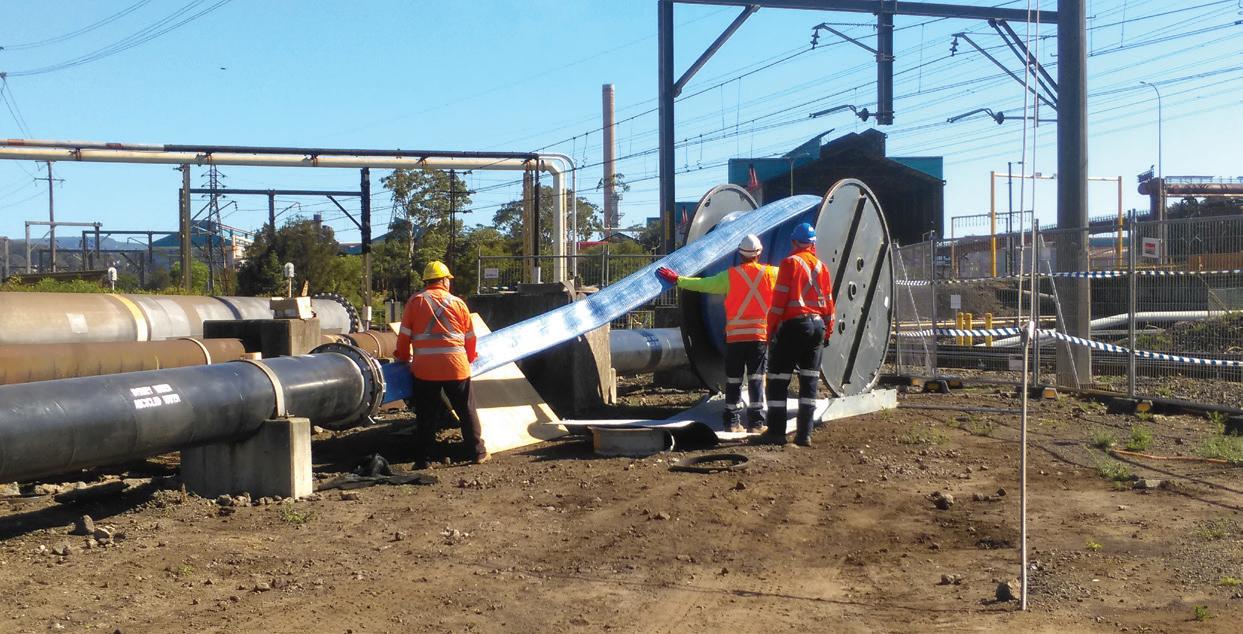
When Sydney Water encountered the failure of one of its high pressure water mains, a range of factors meant that conventional rehabilitation methods were simply not possible. Despite the challenges faced, Primus Line was able to provide an innovative and low-cost solution that has prolonged the life of the water main.
Sydney Water has a long-term contract to supply a large volume of recycled water to the largest steel fabricator in Australia via a mild steel DN500 main. This high pressure main (14 bar) had a catastrophic failure, followed by the undermining of thrust blocks, inclination of thrust blocks and disjoining of sleeve sockets of the pipe, at a major rail crossing in December 2016.
The main was immediately shut down so that the failure could be investigated and the selection of a suitable repair method could be made. Sydney Water kept up supply to the steelworks using potable water.
Sydney Water needed a robust and swift solution. The conventional method of dig and repair was not possible because the failed section was below the railway. Horizontal directional drilling was ruled out because one end of the main was located near a creek, a bridge and many other services.
The option of designing and constructing a pipe bridge was very costly and would have taken too long to execute. Traditional rehabilitation methods, including slip lining, were also ruled out early in the process, as the main has an operating pressure of 14 bar, a number of 45 degree bends and a 90 degree bend.
Following on from other successful rehabilitation projects with difficult bends and high pressure, Sydney Water decided to repair the main using the Kevlar reinforced Primus Line. On investigation, Primus Line engineers deemed the sweep in the 90 degree bend was too tight and the pressure too high for the medium pressure Primus Line DN500.
In the end, high pressure DN400 Primus Line with an operating pressure of 20 bar and a burst pressure of 100 bar

was chosen. The hosting main was carefully inspected and prepared to a standard that did not damage the Primus Line during the installation process and will not harm Primus Line during operation
A portion of this high pressure main is above ground. As a result of the main failure in 2016, the foundation of a thrust block for the change of direction from the above ground section to the buried railway crossing section had been undermined. External consulting engineers recommended construction of a new thrust block with deep pilings. This was not possible due to its close proximity to the railway track and nearby services.
Sydney Water engineers came up with an innovative solution of continuously extending the Primus Line to where the next existing thrust block was. This measure is expected to allow any thrust at the undermined section to be transferred and restrained by the combination of water filled Primus Line weight and the next thrust block
This project was installed and self-performed by Sydney Water as in early 2017, Primus Line trainers travelled to Australia to train Sydney Water on how to install Primus Line. One of Primus Line’s true value propositions is that after training there is no investment required to install Primus Line as it is pulled into place via an approved winch and blown into shape via an oil free air compressor.
In this case, Primus Line was the obvious choice as it could navigate the 90 degree bend, maintain the 14 bar operating pressure and offer a fast installation of only 20 minutes with no curing and at a low cost.

Reliable level measurement in water treatment facilities, pump stations and rain overflow basins. Open channel flow measurement and water level monitoring.
VEGAPULS WL S 61
▪ Measuring range up to 8 m
▪ Can be used outdoors without restriction
▪ Flood-proof IP 68 housing
▪ Operation via Bluetooth with Smartphone, tablet or PC
Further information: www.vega.com/wls61
Phone 1800 817 135
For over 30 years Greg Houston Plumbing (GHP) has provided design and installation of water services, sanitary plumbing and drainage systems of all installation types and difficulty for residential, commercial and industrial projects.
Greg Houston Plumbing provides stormwater drainage systems including on-site detention and storage, heated water services, gas installations, and steam and air installations to a broad range of customers and projects.
If you’re building, excavating or landscaping near Sydney Water assets, you must receive approval from the corporation before you start work to ensure it won't damage or limit access to the assets.
Greg Houston Plumbing provides an integrated service to New South Wales’ most recognised builders and developers, who are required to submit their proposal to Sydney Water for assessment, approval, project management and construction.
GHP are the only accredited provider who offer all services “in-house”, managing the process from basic Tap-In applications, through to more complex works that require an accredited Water Servicing Coordinator, Water and Wastewater (Sewer) Designer, as well as Water and Wastewater (Sewer) Constructors for all types of

applications. GHP can also carry out internal and external drainage and all required plumbing works.
These accreditations enable Greg Houston Plumbing to simplify a sometimes complicated process for its customers when working with Sydney Water by providing an integrated system of services, including:
• Basic - Tap-In Sydney Water Building Plan Approvals
• Non Basic – Sydney Water Building Plan Approvals (building over/adjacent to a Sydney Water asset)
• Payment of Sydney Water fees, including plumbing and drainage for the Department of Fair Trading
• Inspections
• Section 73 Applications, project management and certificates
• Service Protection Reports (formally known as Peg Outs)
• Sewer encasements
• Pier and encasement inspections
• Water and sewer project management, design and construction
• Domestic, industrial and commercial plumbing
Greg Houston Plumbing also maintains a customer focused OHS, Quality and Environmental Management system, planned and developed to comply with the requirements of AS/NZS 4801/ISO 18001, ISO 9001 and ISO 14001 Management Systems Requirements.





Ensuring safe, reliable drinking water each time Sydney’s ever-growing population turns on a tap is a significant and evolving challenge. SUEZ’s Prospect Water Filtration Plant is on the frontline in meeting this essential need.
The Prospect Water Filtration Plant in Sydney’s west is one of the largest potable water contact filtration facilities in the world. For more than two decades it has supplied safe and reliable drinking water to up to 85 per cent of the population, or enough for about four million people.
The plant was built between 1993 and 1996 on a Build, Own and Operate Public Private Partnership model with Sydney Water, combining SUEZ’s international water management expertise and the local project management and construction experience of project partners Civil & Civic (Lend Lease), and commenced operation in 1996.
Located on the edge of the Prospect Reservoir in Wetherill Park, the plant is fed from three raw water sources. The primary source is Lake Burragorang, with water extracted at Warragamba Dam, supplying the plant via two 30km pipelines. The Upper Canal is the secondary source, collecting and transporting water from the Upper Nepean System 64km to the plant via gravity, with Prospect Reservoir – the third water source, accessed using a dedicated pumping station.
The plant is unique for several reasons, including its low energy consumption, small footprint, innovative processes, high water efficiency and proven reliability over more than 20 years of operation. Fed by gravity, the plant’s loss of head is less than 5.5m, allowing for an exceptionally low energy consumption of less than 30 watts per cubic metre
– equating to less than one hour of lighting per kilolitre of water produced.
The single stage process filtration technology selected for the plant offers high filtration velocity while contributing to a very low footprint, allowing construction of the 3,000MLD (million litres per day) plant – with expandable capacity to 4,200MLD – in a space less than the surface of eight cricket grounds.
The plant treatment line is based on contact filtration, involving coagulation and direct filtration, and SUEZ’s innovative Aquazur® V filtration degremont® technology – a concrete filter using a monomedia filter bed – is at its heart. The filter was adapted to the scale and unique challenges of the plant, using a deep bed of 2.15m with large sand particles of 1.8mm effective size. Twenty-four Aquazur® V filters with a unitary surface of 238m2 deliver a total filtration surface of 5,710m2
The filters utilise a highly effective backwash system based on air and water followed by water rinsing. This allows excellent cleaning efficiency, a reduction in mud-ball formation, and ensures the superior level of performance so critical at high filtration velocity. Each filter is equipped with its own online turbidimeter, allowing monitoring to take place throughout all stages of the filtration cycle.
The filtration aims to achieve turbidity levels of less than 0.10NTU (nephelometric turbidity units); well below the Australian Drinking Water Guidelines.
In its first 20 years of operation, the Prospect Water Filtration Plant has
demonstrated consistent availability, largely reliant on optimised contact filtration and the proven Aquazur® V filter technology.
From an efficiency viewpoint, the plant’s process is extremely well optimised. Backwash from the filters is collected, clarified through settling and filtration and then recirculated to the inlet of the plant, delivering plant’s water loss of less than 0.1 per cent. This exceptional outcome is a result of the use of clarification and filtration in the treatment of the backwash water, allowing recycling of the filtered supernatant with a lower turbidity than the raw water feeding the plant. The filtration process is completed by a fluoridation step using sodium silica fluoride, and pH correction using lime water. Disinfection is conducted with chlorine gas dissolved in a stream of service water and added to the filtered water upstream of two large clear water tanks. The contact time provided by the tanks is critical to achieving the disinfection target before ammonia is injected to form chloramines. The potable water then leaves the plant, entering Sydney Water’s network by gravity.
Two decades of highly successful operation has seen the recent extension of SUEZ’s operation contract with Sydney Water for the plant until 2035. Maintaining optimal operations and continuous improvement, the Prospect Water Filtration Plant is well equipped to keep delivering top-quality drinking water for Sydney’s growing population well into the future.
SUEZ degremont ® water handbook is now digital


the water treatment reference always by your side
faster access to information and solutions
case studies to help you with your research possibility to personalise your handbook
a must have
A site optimised for suezwaterhandbook.com


While we know there is a complex process behind the delivery of water to our taps, it’s one that isn’t often understood by the wider community. The people behind this process, the water operators, are now being recognised for their efforts in delivering clean water from catchments, reservoirs, treatment plants, tanks and distribution networks, all the way to the property connection.
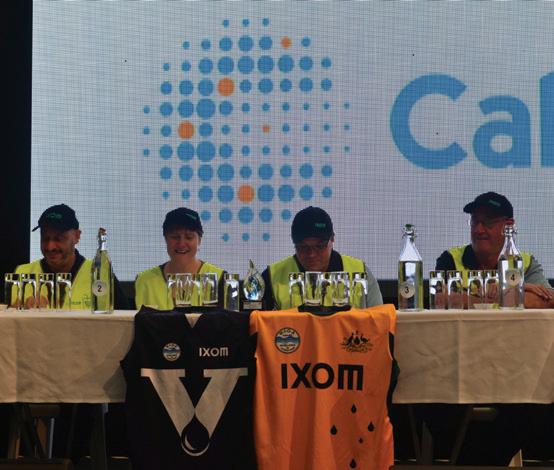
The Water Industry Operators Association of Australia (WIOA) has been at the forefront of efforts to recognise water operators, in particular through its annual Water Taste Test Competition. Each state crowns the best tasting water, with those winners then competing against each other in a national competition for the chance to represent Australia at the Berkeley Springs International Water Tasting competition in West Virginia, US.
THE 2017 WIOA WATER TASTE TEST WINNERS WERE:
ACT/NSW: Icon Water – Mt Stromlo
South Australia: SA Water – Morgan
Tasmania: TasWater – Lake Fenton
Queensland: Toowoomba Regional Council – Mt Kynoch
Victoria: Goulburn Valley Water – Merrijig
The team from the Mt Kynoch treatment plant in the Toowoomba Regional Council area then went on to win the national award for best tasting tap water at the WIOA event held in Launceston last October. The Mt Kynoch team are competing in the international heats in the US in February 2018

















Behind the water operators, and helping them to deliver the highest quality water standards, are the suppliers, service providers and industry peers who provide the innovative technologies, systems and products used in all operations to treat water and wastewater.
Looking at the operators who won the 2017 WIOA Taste Test awards, as well as the technology companies behind their success, highlights how Australia is continuing to test the limits of what can be done with smart technologies and systems in the water sector.
These efforts extend to filtration, disinfection, control and monitoring, all of which are tools that operators utilise daily to manage their operations effectively and safely.
Evoqua Water Technologies helps municipalities and industrial customers improve water quality and water treatment plant efficiency through treatment systems that ensure quality of water, enable

regulatory and environmental compliance, and maintain productivity. Evoqua supplies products for membrane ultra-filtration, analysis and control for disinfection and many more to enable improved performance, efficiency and safe operations of water treatment plants.
TasWater is currently undertaking a Regional Towns Water Supply Program to upgrade its drinking water supplies for communities. As part of a TasWater commitment to addressing water quality issues in regional towns, packaged systems will be installed to accommodate eight townships by Evoqua’s southern region distributor Hydramet and it’s parent company TRILITY, while Stornoway is also completing another five to meet the August 2018 timeline.
This project includes the use of Memcor skid-mounted pressurised membrane modules, VAF self-cleaning
pre-filters, Barrier-S UV systems, and Wallace & Tiernan control packages.
The Memcor systems manufacturing plant, provides local jobs for over 150 people to produce Australian made complete membrane systems for global supply.
This is just one project in Australia highlighting the collaboration between local Australian water operators and their business partners.
Those operating in the water industry also have an obligation to consider the environment in which their operations are located. One way to do this is by partaking in responsible wastewater management through the employment of skilled treatment operators, diligent process steps and innovative technologies in every aspect of the process, from sewage collection, to reuse or safe discharge.
Evoqua’s Memcor Membrane Bio-Reactor is the backbone of many plants, in addition to aerators, clarifiers, biogas harvesting and other key technologies.












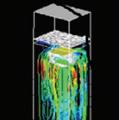



























Sydney Water and the NSW Department of Planning and Environment are working on an upgrade and expansion of water and wastewater services in growth areas of Sydney. As part of a record $2.2 billion spend over the next three years, Sydney Water will provide new and upgraded wastewater infrastructure in Sydney’s North West to support an expected additional half a million people by 2040.
By 2040, the number of customers in the catchment area serviced by Riverstone, St Marys and Quakers Hill is expected to more than double. Sydney Water is investing $450 million into the Lower South Creek Treatment Program which involves amplified wastewater treatment facilities at Riverstone Wastewater Treatment Plant and upgrading water recycling plants at St Marys and Quakers Hill.
The project will also see improvement work to a 12km pipeline that runs between the St Marys and the Quakers Hill Water Recycling

Plants, and a new biological nutrient removal plant at the Quakers Hill Water Recycling Plant, both to be completed in 2020. These improvements will result in many benefits for the surrounding community, including cleaner waterways.
Biological nutrient removal is a process that removes nitrogen and phosphorus from wastewater before it is discharged into surface or groundwater. Overall, the biological nutrient removal plant works to
accomplish a balance between achieving tight effluent discharge standards, minimising power use and chemical consumption, while providing the operations team with a plant that is reliable, and easy to maintain and operate.
Mark Simister, Head of Delivery Management at Sydney Water, said the biological processes for the plants pose a challenge as Sydney Water is targeting low effluent discharge targets of total phosphorus and total nitrogen.
“The biological nutrient removal plant removes the bulk of the phosphorous in the wastewater, and with the addition of a supplementary carbon source also produces lower nitrogen levels,” Mr Simister said.
Construction works commenced at the Riverstone Water Treatment Plant in February 2016 and are expected to be completed in mid 2018, followed by a commissioning stage.

Boosting water infrastructure for a booming population
The remainder of the project is in a detailed design phase as Sydney Water is currently assessing the environmental and community impacts of the proposed work at St Marys and Quakers Hill Water Recycling Plants. This assessment, or Review of Environmental Factors, was on public display until 22 December 2017 at sydneywatertalk.com.au.
“We are planning for work to start at St Marys Water Recycling Plant in early 2018 and Quakers Hill Water Recycling Plant in mid 2018. It is expected that construction and commissioning of the new infrastructure will be complete in 2020,” Mr Simister said.
“The Lower South Creek Treatment Program will improve the quality and reliability of wastewater services and increase the treatment capacity at all three plants, supporting growth in these areas. Treatment capacity will increase at Riverstone by more than three times the current amount (4ML/d to 14ML/d).”
As part of the project, Sydney Water has adopted a new approach to planning, design and specialist services, choosing to utilise a Delivery Partner model for this project.
The Delivery Partner model encourages partnerships with the supply chain through an integrated team, and innovation and flexibility in delivery coupled with cost efficiency from contractor continuity, as well as economies of scale.
“We are able to secure pricing early and procure materials for all three sites at the same time. These cost savings are then passed on to our customers in the form of lower water bills,” Mr Simister said.
Mr Simister said Sydney Water is the first water utility in Australia to use this innovative delivery model to deliver best outcomes for customers and government.
“The Delivery Partner model is a highly collaborative performance-based approach, where the delivery partner takes accountability for the overall
As part of the project, Sydney Water has adopted a new approach to planning, design and specialist services, choosing to utilise a Delivery Partner model for this project.
program outcomes and manages contractors, while Sydney Water remains principal for those contracts,” Mr Simister said.
“Using the Delivery Partner model for a program of works, Sydney Water is able to realise cost efficiencies through packaging of works, improved supply chain integration and uniform procurement of materials and construction contracts.
“We can now cater for accelerated mobilisation, team integration and delivery implementation. We have also designed the model to be agile enough to take advantage of changing technical priorities and customer needs, along with cost and scheduling opportunities.”
The upgrade program will ensure that Sydney Water continues to supply a reliable wastewater service that supports the region’s estimated
growth and continues to protect the environment and waterways in the area.
“Sydney Water is committed to minimising any impacts from the project’s construction activities on the local community. The community and other stakeholders will be provided with accurate and timely information throughout the life of the project.”
Kevin Young, Managing Director at Sydney Water, said that these infrastructure projects provide the foundation and investment to allow for the growth of Sydney.
“We are helping to fulfil the dream for thousands of extra families to own a home in Sydney, one of the world’s most liveable cities.
“A key driver for the investment program is to deliver quality services to Sydney Water customers while reducing customer bills, which we have been able to deliver in real terms by around $100 a year.”
Other projects included in the $2.2 billion Sydney Water upgrade project:
• $130 million to provide water and wastewater services for around 20,000 new dwellings in western precincts of the North West Priority Growth Area, including Marsden Park, Marsden Park Industrial, Marsden Park North and Schofields West
• $27 million wastewater pumping station and the installation of around eight kilometres of wastewater pipelines will allow for 7,000 new homes to be built in Sydney’s South West at Oran Park
• $19 million construction of a new wastewater pumping station and 4.2km of pipelines at Austral in Sydney’s South West
• $45 million for two wastewater pumping stations and 12km of pipeline at Leppington in Sydney’s South West
• $100 million to upgrade the Northern Suburbs Ocean Outfall Sewer network, which collects about 25 per cent of the Sydney Basin’s wastewater and runs from Blacktown to North Head. The work will include de-silting and repairs to this critical pipeline between West Ryde and North Head
• $45 million to separate Sydney’s last remaining combined stormwater/ wastewater system to help reduce the number of wet weather wastewater overflows at Woolloomooloo Bay






With a wealth of experience across a number of executive roles and senior leadership positions, Terri Benson was an obvious choice for the role of Managing Director at South East Water. She only joined the utility midway through 2017 but is already making her mark by ensuring technology and innovation remain at the forefront of South East Water’s operations.
Ahighly experienced Chief Executive Officer, Ms Benson has held a range of both executive and nonexecutive director roles in government, utilities and private infrastructure sectors.
She is a former CEO of Seqwater and a former Managing Director of Essential Energy, responsible for the delivery of electricity services across 95 per cent of New South Wales. Ms Benson has held leadership roles in Essential Energy’s predecessor organisations, working at an executive level in most operational areas over a 14-year career.
Ms Benson’s non-executive director roles have included directorships at CBHS Health Fund, DUET, the Energy Networks Association and Gas Market Company. She is also a former Chair of the Energy and Water Ombudsman NSW.
Ms Benson said she got her start in the utility industry when she moved to the Blue Mountains region of New South Wales.
“I started my career at Chartered Accountants Deloittes. My husband worked as a policeman and was transferred a couple of times to country towns. Whilst living in a small town called Moulamein, I worked with the local Rural Lands Protection Board,” Ms Benson said.
“We later moved to Lithgow where I acquired my first role in utilities; an accounting role with Advance Energy. It was one of those situations where I was in the right place at the right time to take on a role which has led me to work in several executive positions across the energy and water sectors in New South Wales and Queensland, and now here at South East Water.”
Prior to joining South East Water, Ms Benson was also the Managing Director of Birdon, a diversified engineering and services business providing innovative solutions to the military and marine industries with operations across Australia, USA and Europe. She led the Australian business through a period of significant growth and change.
Ms Benson said she found the opportunity to lead South East Water compelling for many reasons, particularly as it combines skills she has developed across a variety of roles into a single position.
“It drew on my experience as Chief Executive Officer at Seqwater, where we managed over $12 billion in assets, while enabling me to build on my experience in the electricity sector and as Chair of the Energy and Water Ombudsman NSW, which was focused around customer experience and fairness,” Ms Benson said.
“It’s also such exciting time to join South East Water. It has two ground-breaking projects, both the result of extensive collaboration, planning and innovation.”
With the release of the Fishermans Bend Draft Framework, South East Water’s integrated water management proposal will become a catalyst project in the largest urban redevelopment in Australia, helping Fishermans Bend to achieve new levels of sustainability and liveability in high density urban living.
In addition, the Aquarevo housing estate, located on the site of a former water purification plant in Melbourne’s south-east, is on track to become Australia’s most water efficient residential urban development. The collaboration between South East Water and Villawood Properties aims to show there’s a better way to use water in the home, with Aquarevo houses featuring a range of unprecedented water saving features.
Each property will be plumbed with three types of water: drinking water, recycled water and rainwater, helping to reduce demand on drinking water supplies. Rainwater tanks will be fitted with technology that receives weather forecasts, releasing water before heavy rainfall to minimise overflows or flooding in local waterways, and a OneBox® device will control the water technology in each home and remotely monitor water and energy use.

Of the 190 lots released for sale so far, all have now sold, and civil construction works are well underway. The Victorian branch of the Urban Development Institute of Australia has also recognised Aquarevo with six leaf accreditation for its sustainable initiatives in the areas of water, ecosystems, community, waste, materials and energy.
“These are both great examples of how South East Water is delivering on its commitment to create liveable communities, and one of the reasons working here is so rewarding,” Ms Benson said.
While South East Water prides itself on the adoption of emerging technologies to create a more efficient and intelligent water network, there are a number of external challenges still to address.
Ms Benson said the most obvious challenges the industry faces are around climate change and population growth, especially with Victoria’s population set to double by 2051.
“Responding to these challenges won’t just be about building new infrastructure, it will be about using our existing investments more efficiently, and taking advantage of emerging technologies to optimise asset use. Network digitisation is a great example, enabling utilities to reduce leaks, increase network reliability and create a safer working environment,” Ms Benson said.
Ms Benson said it is also important for water companies to continue to work with customers to better understand their needs and expectations.
“For example, as part of our pricing submission for the 20182023 regulatory period, our customers told us they expect us to use digitisation to deliver the same benefits that other providers have delivered – efficient service delivery, greater control and bill certainty, and better customer experience.
“We’ve learned we must continually engage with our customers, and ensure our services continue to reflect their diversity of needs,” Ms Benson said.
Ms Benson said she wants to continue to be a part of an organisation that values its relationship with its customers and communities, and provides the best available solutions to customers at an affordable price.
“While our world is changing in terms of population growth, technology and climate change, it is essential that we remember our purpose is to provide the best possible solutions to our customers,” Ms Benson said.
“The solutions that we will provide in the future will be very different to the solutions traditionally provided. As all utilities are going through similar changes, with heavy infrastructure solutions being increasingly challenged, I see South East Water as being a crucial part of the solution, and as a trusted water partner to our customers.”
Ms Benson said a big part of her role is to create an environment where people can collaborate, think big, and one where anyone can contribute.
“We have some truly amazing talent working hard on innovative concepts, products and services to solve water challenges. A key measure of their work is the success of our iota Services team, which takes South East Water’s innovations, and commercialises them for the benefit of the broader industry. Through iota Services, South East Waterdeveloped technology is already being deployed elsewhere in Victoria, interstate and overseas,” Ms Benson said.
“It’s an inherently innovative culture, and I want to make sure we keep trying new things and keep looking for better approaches.”






Integrating intermittent generation into the grid
Analysing the economics and policies driving changes in the energy mix



Assessing the potential for demand response to stabilise the grid
Utilising data and analytics to better understand customers
In October 2017, the Wide Bay Burnett Regional Organisation of Councils (WBBROC) collected the award for water projects over $5 million at the Institute of Public Works Engineering Australasia (IWEA) Queensland 2017 Excellence Awards for its Joint Sewer Rehabilitation Program.
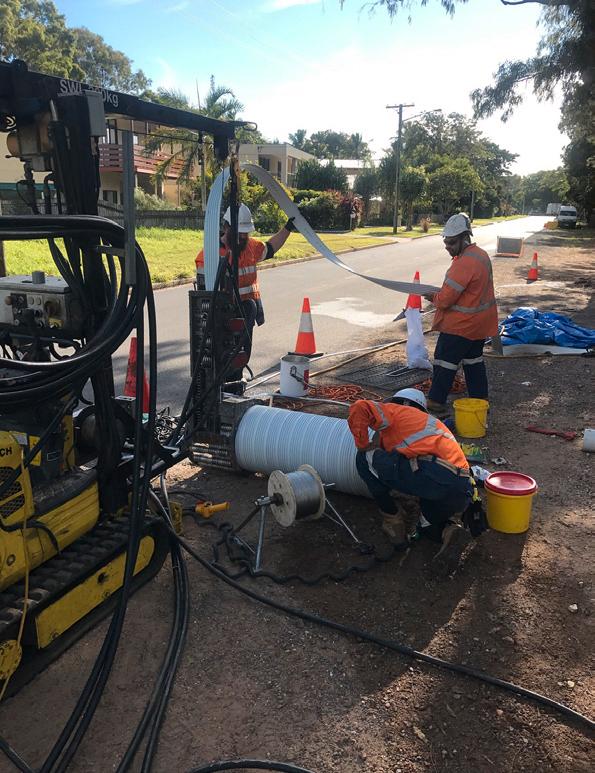
The award recognises councils and individuals who have demonstrated best practice and innovation in public works projects across Queensland.
It was awarded to WBBROC for its collaborative effort to deliver a large-scale joint procurement of sewer relining services to extend the life of sewer assets and deliver efficiencies for water and sewerage customers, following an extensive planning period.
The WBBROC is comprised of Bundaberg Regional Council, Cherbourg Aboriginal Shire Council, Fraser Coast Regional Council, Gympie Regional Council, North Burnett Regional Council and South Burnett Regional Council.
WBBROC decided to create collaborative tender with the support of the Queensland Water Regional Alliance Program (QWRAP), which focuses on delivering efficiencies for water and sewerage customers through collaboration.
Heather Gold from QLD Water said, “Joint procurement is often the first thing discussed when regional groups are established, and yet it can be one of the most difficult achievements to deliver, due to the challenges of dealing with different council policies and protocols, and alignment of maintenance and renewal programs.
“The benefits however can be significant. After an extensive period of planning, the Wide Bay Burnett Regional Organisation of Councils has delivered a large-scale joint procurement of sewer relining services, largely thanks to the significant efforts of the collaborating councils, and specific leadership of Fraser Coast Regional Council.”

Major benefits realised for WBBROC due to the collaborative tender process include:
• Being able to offer a larger tender value attracted wider competitive interest which is often difficult for individual councils as some networks are too remote or lack the critical mass to attract a broad range of contractors. The wider interest resulted in competitive pricing due to the commercial scale, security and lower equivalent tenderer costs.
• The program developed a regional understanding of network needs to take advantage of economies of scale, standardising contractual arrangements to provide both certainty and enough flexibility to deal with idiosyncrasies.
• Stage one cost just over $6 million with 10 per cent savings directly delivered to councils and their communities, and an additional $2.4 million was saved due to Cherbourg Council using relining technology instead of replacing sewerage assets. The significant cost savings have allowed twice the length of mains to be relined than originally budgeted for.
• The work has led to significant intangible benefits, with the procurement documentation serving as a basis for other projects both within the region, and for other alliances elsewhere in Queensland.
The joint rehabilitation program is primarily focused on rehabilitating passive sewerage assets owned by WBBROC member Councils, including sewer mains and property connection junctions, with works split across two stages over two years. The tender for stage one was released in mid-2016 and was awarded to Abergeldie Watertech, who are part of the Abergeldie Complex Infrastructure group, in December 2016.
Both stages involve relining sections of the various sewerage networks on a progressive schedule, prioritised according to asset condition assessments conducted as part of each councils routine operation and maintenance activities.
The program is currently in its second year and WBBROC are now collating the works packages for stage two of the program. The contract for stage one was valued at $6 million and included the relining of sewerage networks combining the programmed works packages for four council areas.
Each council has been able to maintain local control of the sewer relining works with the appointment of a local supervisor.
Steve Brown, Regional Water Coordinator at WBBROC, said the works packages for each council were defined following a pre-tender CCTV survey of network condition to both prioritise and update condition assessments as part of the tender specification.
“Sewer relining is highly specialised work with relatively few suppliers available in the region.
Three generally accepted relining technologies proposed included Folding Form (FF), Cured-in-Place Pipe (CIPP) and Spiral Wound (SW), although not all have the same durability and technical performance,” Mr Brown said.
FF was ultimately chosen because of its ability to accommodate a greater range of pipe diameters and a longer projected service life.
FF sewer liners are manufactured in a folded shape, and once it has been inserted into a pipe heat and pressure are used to form it back into a circular shape. This makes it versatile and simple to install.
Mr Brown said the development of individual work packages and specifications played a crucial part in achieving savings as it removed potential contract risk to prospective tenderers through the definition of asset condition.
“Previous relining tenders relied on partial, typical or outof-date survey information often resulting in a risk premium to unit rates and minimised the number of variation claims and cost overruns,” Mr Brown said.
“It was also key to allowing the tenderer to schedule the works more efficiently and led to a 50 per cent reduction or $60,000 in mobilisation costs between works packages.

“Further CCTV surveys were conducted during the course of and on completion of works and finally on expiration of the defects period, and allowed a greater confidence in restoration of network function and extension of asset life.”
The tender was managed by Wide Bay Water, a commercial business unit of Fraser Coast Regional Council, which not only saved the other councils a great deal of duplication, but also meant the smaller councils benefitted from technical and tender expertise that they did not have in-house.
Mr Brown said participation in the program was nonbinding with two of the six councils in the Wide Bay Burnett Regional Organisation of Councils not requiring works in stage one.
“Cherbourg Aboriginal Shire Council joined the tender just after award (under participatory provisions) and increased the total value to around $6 million,” Mr Brown said.
“While this did not deliver further cost benefits to other participants, it significantly reduced tender administration costs to others. It is likely that in view of the highly competitive nature of the industry, the additional scope of works associated with Cherbourg’s participation would not have significantly reduced costs to other Councils.
“At commencement, Cherbourg had no works program requiring sewer relining and had not expressed any likelihood of involvement and their late participation was due to a diversion of surplus DILGP/QRA funding for STP upgrade works.”
Mr Brown said the collaborative tender process has been highly successful and expects that it will set a precedent for subsequent calls for tenders for similar works packages.
“The model sets a precedent for application to a number of other regional procurement collaborations for water and sewerage service providers both within WBBROC and in other ROCs.”

GThe benefits of local manufacture, linked with the ability to design and customise, and technical support provided by Iplex and RPC Pipe systems made Flowtite® GRP pipe the ideal solution for the Western Adelaide Wastewater Network Upgrade.
lass Reinforced Polymers (GRP) Pipe have been a recognised solution for pipeline rehabilitation and infrastructure design, since Iplex’s introduction and commitment to driving awareness, acceptance and growth of GRP in the Australian market.
Iplex Pipelines is the Australian distributor of Flowtite® GRP pipe and fittings, manufactured by RPC Pipe Systems in South Australia. Flowtite® pipe can be produced in customised pipe dimensions, pipe stiffness, pipe lengths and joint types, to provide fit-for-purpose solutions for sewerage, water, wastewater and drainage projects.
The customised and locally produced options available within the GRP range, further demonstrates the material’s versatility as a pipeline solution for installations in difficult environs and tight construction programs.
The Flowtite® manufacturing process utilises a continuous and advancing mandrel, around which glass filaments are wound, ensuring consistent high-quality pipes with glass, sand and resin accurately placed to optimise strength and stiffness in hoop and axial directions.
The construction of the Western Adelaide Wastewater Network Upgrade was undertaken in early 2017, to increase the existing sewer network capacity within the Adelaide CBD. The upgrade had a tight project schedule and a pipeline alignment requiring the main line to be run under arterial roads, beneath rail lines, and through environmentally sensitive green space parklands.
Leed Engineering and Construction were contracted to deliver an expedited solution for the 2.7km gravity sewer upgrade, future-proofing a key element of the city’s wastewater infrastructure. The versatility of the Flowtite® GRP pipe material, with its high chemical and subsequent corrosion resistance when used in sewer applications, was pivotal in approval for this critical asset.
Leveraging the close proximity of RPC Pipe Systems facility in Lonsdale, Adelaide, allowed the coordination of
manufacturing and logistics to deliver shipments to site in accord with the project schedule. Deliveries had to align with specific stages of the installation and consider the impact of open trench excavation within a public green space.
The supply of Flowtite® GRP pipe in custom lengths, allowed the pipeline to be installed with significant time and cost savings, eliminating the need and subsequent management of on-site pipe cutting.
The project design specified 700m of DN750 and 1600m of DN1000 Flowtite® SN10000 GRP pipe to complete the sewer upgrade through a combination of open trench and pipe jacking installation methods.
Pipe lengths ranging from 3.5 to 6.0m, were installed in alignments incorporating 27 custom designed and purpose built GRP manhole access chambers. These access chambers were manufactured from an engineered design and were constructed of GRP material to include the shaft, inlet and outlet pipes, and internal benching.
Conventional design and installation of concrete-formed chambers requires the provision of a reinforced base to build the manhole structure upon, a process that extends the overall project timeline.
The bespoke, factory-built GRP Access Chambers supplied by Iplex reduced the individual chamber installation time significantly. Project cost savings were achieved by avoiding the need to return and construct concrete chambers, following the pipeline’s installation.
The design and delivery of the Western Adelaide Wastewater Network Upgrade is an example of Iplex Pipelines’ capacity to engage with stakeholders on largescale infrastructure projects that are frequently challenged by construction schedules, and those governed by environmental controls.
The measure of success in pipeline installations of this scale recognises Iplex’s project partner credentials, further identifying Iplex as Australia’s Pipeline Specialists.







The HYDRAPULSE Flusher Gate keeps problem sewers clean with its innovative gate device that pulses the flow of sewer to minimise the build-up of fats, oils and grease (FOG), and debris, reducing ongoing maintenance costs by removing the need for costly repetitive jetting and CCTV programs.
In early 2017, Aussie Trenchless launched HYDRAPULSE onto the Australian market, and whilst it passively delivers sewer cleanliness, it also offers additional environmental and customer benefits to asset owners.
HYDRAPULSE is installed in sewer maintenance holes where the network is subject to blockages due to FOG, sags in the line, and where debris and solids are deposited due to low flow conditions.
The unique design of the HYDRAPULSE provides an instantaneous snap opening and closing action which produces a wave pulse of wastewater to flush
and cleanse the downstream sewer effectively. On the upstream side, constant changes in the effluent level and flow help to prevent FOG, silt and debris from building up onto the sewer walls.
Installing HYDRAPULSE will allow the sewer to become a passive self-cleaning asset, requiring no power. The design is resistant to jamming and blocking, is inherently fail safe during storm conditions, will remove surcharges caused by build-up and needs minimal maintenance. Asset owners will have less customer
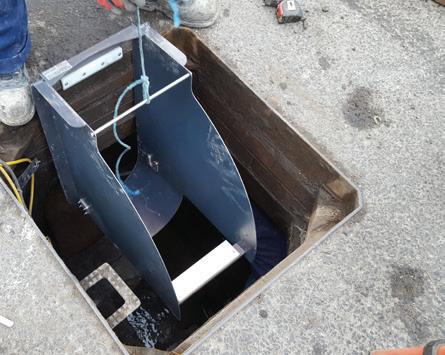
complaints and no jet cleaning damage to the pipe internals.
HYDRAPULSE is easy to install, can be monitored remotely and should be of interest to most water authorities, and city and regional councils that are responsible for the serviceability of wastewater underground assets.
A passive gate device for controlling and maximising hydraulic flow in sewers
• Reduces operational costs
– No more water jet sewer cleaning
– No more Silt & Debris removal
– Less surcharge & blockages
• Installed in Maintenance Holes
– Easy to install
– Easy to maintain
– For DN150 to DN450 sewer pipes
• Resistant to rag jamming and blocking
• Inherently “fail safe” during storms
• Data Logger and Telemetry Module
– Know what’s happening and when


+61 418 691 989
6/58 Box Road, Taren Point NSW 2229 Australia
enquiries@aussietrenchless.com
www.aussietrenchless.com

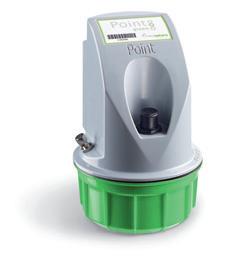

3G / DNP3 / IP68 / 2 sensors / CI & DI I/O options / RS232, RS485 & SDI-12 / 5+ years battery life
Ideal for simple remote and/or underground ‘out-of-sight’ monitoring applications.
3G / DNP3 / IP68 / 5 sensors / AI, CI, DI I/O options / RS232, RS485 & SDI-12 / Up to 4 passive/2 Active voltage inputs / Up to 5 digital inputs / 5+ years battery life / flexible I/O configuration
Offers a wider range of applications including: rainfall, creek level and flow, sewer level and pressure, dam level management.

Benefits from most of Point Orange’s functions and in addition is IECEx approved / Exll 1G Ex ia llB T4 Ga (-20°C ≤ Ta ≤ +50°) / Can be used as part of an overall IECEx compliant installation
Ideal for utilities, gas and energy providers, agricultural applications and inline monitoring of gases and liquids.
When Point Colour RTUs are combined with our web-hosted end user data visualisation platform, ‘Palette’, they provide a real time monitoring and management tool that enables effective decision making.
To find out more contact email info@metasphere.net.au or call 1300 785 681 www.metasphere.net.au
One of the latest buzzwords in the utility industry is “change”, but what does it really mean for the future of our industry? Simultaneous changes in the societal, environmental, technological and political landscape are transforming the way we do business. In this period of volatility and complexity, the challenge for many utilities is to identify practical measures we can take to prepare for a future that is constantly evolving.
Through extensive collaboration, we recently developed a Future Directions paper to inform our journey to becoming a “Utility of the Future” (Figure 1). This was a groundbreaking piece of work for the Australian water industry, whereby we comprehensively assessed our operating environment and a variety of drivers, to define a direction forward for our business.
We believe shared value is increasingly important in the future, so we want to share our insights with the broader utility industry.
Water and sanitation services are fundamental to our society, the environment and economy. To ensure we maintain this essential service and deliver value, we are compelled to use our insights of today to look ahead and create foresight.
At Queensland Urban Utilities, we have examined the future through the lens of our purpose “to enrich quality of life”.
Over 18 months, we considered our aspirations, investigated current and future trends as well as forces of change, explored what it may mean to be a “Utility of the Future” and identified pathways to reach our goal. We created a vision for what our business will look like in the future and the actions we will take to get there.
This future pathway represents a fundamental direction

change for our organisation to continue to meet the needs of the communities we serve. Through the process, we were always guided by our purpose.
Understanding your organisation’s “why” helps to set its future direction and mapping “how” is essential to getting there successfully.
Preparing for the future requires a two-pronged approach – developing pathways and investing in cultural change. It’s not enough to write a strategy, you also need to bring your colleagues and partners along on the journey.
To develop our Future Directions paper, we spoke to hundreds of our employees as well as industry partners about their ideas and experiences.

In our experience, a huge amount of potential was unlocked when people at all levels of the organisation opened their minds to the possibilities of the future. The process of developing Future Directions generated newfound excitement about the future and created a platform for innovation to propel us forward.
Drawing on our research into global trends and local industry forces, we mapped a number of future scenarios for the industry and considered how a “Utility of the Future” would respond to each.
We recognise that the future could unfold in hundreds of ways and it’s neither possible nor necessary to plan for all of these scenarios. The value of the future scenarios lies in the discussions they generate and the insights they provide when you look back from that future vantage point.
By asking “what if?” we were able to identify common themes which helped a utility to be successful no matter which future unfolds.
We believe every future-thinking utility should consider these five themes:
1. Customer and community centricity
Customers are becoming more connected and have
greater access to information. As this happens, they will begin to demand more choice and expect better value. The most consistent theme throughout our research was the importance of maintaining meaningful customer engagement and managing stakeholder needs. Eventually, consumers will be prosumers (that is, a consumer who is also a producer) and potential competitors.
2. Environmental leadership
Businesses will have to face big environmental challenges in the coming decades, such as the impacts of climatic variability on supply and demand. “The Utility of the Future” will demonstrate leadership in managing these and become a “waste to resource” economy. Utilities will be expected to enhance the local environment as part of maintaining their social licence to operate.
3. Commercial viability and acumen
Strong commercial capability will always be needed to respond to economic challenges which lie ahead, as well as an ability to cost and price services in a way that delivers value and supports long-term commercial viability.
4. Balance risk and opportunity
Utilities need to transition from a risk management

focus, to one of risk and opportunity management. In a dynamic world, success lies in the ability for an organisation to see the opportunity behind a perceived risk, and then to identify suitable partners to help manage those risks and share the benefits.
5. Leverage attributes and capabilities
Possibly the most important of all, a “Utility of the Future” is purpose-led, agile, collaborative and multiskilled. These characteristics will permeate culture and support positive partnerships with external stakeholders.
These five directional themes connect together to create shared value. This is depicted in the shared value model (Figure 2) and illustrated by our Beaudesert nutrient offsets project (Figure 3).
The challenge for utilities is to find innovative ways to create shared value amongst these themes, without trading one off against another. Trade-offs are easy compared to the challenge of discovering and delivering shared value, but once you have achieved it there is no going back.
Queensland Urban Utilities has recently partnered with Healthy Land and Water, and the Port of Brisbane on a second nutrient offset project at Laidley.
The Beaudesert nutrient offsets project involved rehabilitating a kilometre of degraded banks along Logan River, near our Beaudesert Sewage Treatment Plant. We partnered with Healthy Land and Water to design and build a stable riverbank profile, and plant new trees and grasses to prevent approximately five tonnes of nitrogen and 11,200 tonnes of sediment from entering the catchment every year due to erosion. This green infrastructure will avoid the need for a costly upgrade to our nearby sewage treatment plant, while also benefitting local landholders. This is a win-win for business, landholders, customers and the community as well as the environment –this is shared value.
How can utilities prepare for an ever-changing future?

Through the process of developing Future Directions, our journey towards becoming a “Utility of the Future” has already begun. The exercise of defining our future narrative opened our minds to future possibilities and I would encourage all utilities to embark on a similar journey.
As we each gather insights and develop foresight, we can deliver shared value through internal and external collaboration and remaining true to our purpose.
As Queensland Urban Utilities turns its attention to developing strategies and tools to reach our desired state as a “Utility of the Future”, we will continue to ask: How can Queensland Urban Utilities continue to enrich quality of life?
This conversation isn’t over and Queensland Urban Utilities welcomes your feedback. You can send your thoughts and ideas to utility-of-the-future@urbanutilities.com.au. To read Future Directions, visit www.urbanutilities.com.au/publications.


In
September 2017, the Civil Aviation Safety Authority (CASA) began the first stages of its drone safety review, on which a discussion paper on the range of safety issues to be examined during the review was released. Responses to the discussion paper were released in December 2017, with CASA aiming to provide a final report in early 2018.
The review is considering CASA’s current approach to the regulation of drone operations, particularly the relative safety benefits and cost effectiveness of: introducing mandatory registration, education and training for all drone operators, the deployment of geo-fencing capabilities and any other mechanisms to enhance aviation safety and manage the risks associated with drones in Australian airspace.
The review is also being informed by the most recent Civil Aviation Safety Regulations Part 101 amendments and take into account recommendations developed by the Unmanned Aircraft Systems Standards subcommittee.
According to Corporate Communications Manager at CASA, Peter Gibson, rapid technological change and innovation are key drivers behind the review.

“The rules have been in place since 2003 and have served Australians well, but technology has changed dramatically as has the use of drones. So it was sensible to begin the process of reviewing the drone safety regulations. A range of issues have been raised publicly about drones in recent times and the key ones are canvassed in the discussion paper,” said Mr Gibson.
“The discussion paper looks at key issues such as drone registration, mandatory training and experience for drone pilots, mandatory geo-fencing and counter drone technology. A challenge for CASA is informing and educating people flying drones who are not part of the mainstream aviation community.”

Members of the public and stakeholders from a variety of industries were encouraged to submit their responses to the discussion paper by 29 September 2017 to help inform CASA of the most pressing updates to drone safety regulations.
“CASA always consults widely before making regulatory changes. While CASA has a wealth of aviation experts and expert knowledge we do not hold all the wisdom about aviation safety. Consultation is one of the keys to making good safety rules,” said Mr Gibson.
CASA received 910 responses to the discussion paper and a final report was due to be released at the start of the year.
More than 85 per cent of respondents supported some form of drone registration, with three registration options offered: by drone; by owner; by operator. Responses were split relatively evenly between the three options but drone size was also favoured as a determining factor in deciding the criteria for registration.
The majority of respondents (more than 85 per cent) supported the concept of mandatory training or proficiency criteria in some circumstances, but less than a quarter considered it necessary for all drone operators.
The introduction of mandatory geo-fencing received limited support, with most respondents choosing to answer no. The nature of responses showed that geo-fencing and counterdrone technology were generally perceived as too aggressive
and many felt that more education, rather than punishment, was a better route to improved safety.
The organisation is also evaluating the effectiveness of its own operating model to ensure it continues to strike a balance between maintaining high levels of safety and supporting the technological and operational growth of the drone community, while staying abreast of developments within the International Civil Aviation Organisation (ICAO) and other international aviation safety agencies.
“CASA is very supportive of drone technology. We have facilitated many research and trial projects. Right now an important drone home delivery trial being run by a Google company is underway outside Canberra," Mr Gibson said.
“This company chose to come to Australia for the trial due to our accommodating regulatory structure. CASA wants drones to play a key role in society – but of course this must be done while protecting public safety."
There are strict penalties for drone operators who do not comply with safety regulations, including fines of up to $10,000 and the possibility of appearing in court.
“CASA has an online reporting tool for drone breaches and encourages people to report using this tool. Where evidence is available, CASA will investigate and where breaches can be proven, penalties will be issued,” Mr Gibson said.







Conducting pipeline inspections can sometimes be a challenging task due to the proximity to hazards, limited access spaces or large inspection areas ranging many kilometres. Unmanned Aerial Vehicles (UAV), or drones, offer a unique range of benefits as an asset management tool for pipeline inspection and detection of integrity issues. Here, we look at these benefits and how a unique drone on the Australian market can further expand inspection capabilities to confined spaces.
Water and sewer pipelines require regular inspection and maintenance monitoring in order to remain compliant, and ensure the efficiency and longevity of the assets. In utilising UAV technology to carry out routine inspections, you can cover large areas of land and enter tight spaces in a short amount of time while also improving employee safety, lowering expenditure and reducing downtime.
Drones come equipped with image capture technology, which can range from high resolution digital cameras to thermal and infrared cameras, that allows the operator to navigate the drone and record abnormalities. The data collected can then be extrapolated and analysed in real time through live video feedback, allowing asset operators to streamline and enhance the inspection process.
Austeck Managing Director, Tristan Day, said drone technology provides a systematic data collection solution when inspecting areas that span across a large distance, or to get into confined or restricted mobility spaces.
“You have someone operating the drone at all times who knows exactly what they’re looking for and can conduct a full inspection. UAV’s, like Flyability’s Elios drone, can mark specific points of interest so that when the data is examined you can extract only the relevant data from that particular mission. And what’s even better is you don’t need any specific software to do it,” Mr Day said.
Traditionally, drones have only been able to be used in open spaces because of the potential crash risks and limited mobility, but the Elios drone - a new drone to Austeck - is now allowing inspections to be conducted in tight spaces, such as down manholes and through water mains, with minimal risk to the drone and ease of mobility.
The Elios drone has its own protective frame that makes it collision-tolerant. It’s circular frame protects the drone from obstacles, making it easy to navigate even the tightest spaces without the risk of damage.

“The protective frame on the Elios can be used to bounce off and roll over surfaces which increases its movability even more. You can fly close to or even in direct contact with humans without any risks of injuries,” Mr Day said.
“Elios is equipped with an LED lighting system that is remotely adjustable, along with a full HD camera and thermal camera so you can go into any job knowing you have the right tools.”
The Elios drone is also dust and splash-resistant, and can operate in environments between 0° and 50°C making it ideal for water and sewer inspections.
Along with being able to navigate confined spaces, the Elios drone can also be used for a variety of other applications. From a safe place, the drone operator has full control over navigation and all the settings of the camera head such as exposure, lighting and pitch angle. This, along with the more than 100m height capability means the drone can be used for the inspection of above ground assets which are remote or difficult to reach, or where safety hazards prevent operators from getting close to the asset.
“With the wide range of features and high level of durability of the Elios Flyability, the applications are only limited by your imagination,” Mr Day said.
“The drone can fly over 100m above ground so applications can include condition monitoring and maintenance inspections both above and below ground, including things such as tank and plant inspections.”
“We understand that this type of technology can be overwhelming for someone who isn’t familiar with its operation. That’s why at Austeck we provide training for all our clients on the use of our maintenance equipment.
“It is also company policy to offer telephone support, 24-hours a day, on all matters of maintenance of our equipment.”
For more information, visit www.austeck.com.
As part of the Australian Government's National Positioning Infrastructure (NPI) Capability, Geoscience Australia is leading a trial of a Satellite-Based Augmentation System (SBAS) for the Australasian region.
A SBAS will overcome the current gaps in mobile and radio communications and, when combined with on-ground operational infrastructure and services, will ensure that accurate positioning information can be received anytime and anywhere within Australia and New Zealand.
Geoscience Australia, in partnership with Land Information New Zealand (LINZ), and the Australia and New Zealand Cooperative Research Centre for Spatial Information (CRCSI) are working with more than 30 organisations and businesses from ten industry sectors to test the economic and social benefits of improved positioning technology.
To date, eleven contracts have been signed with participants from a range of industry sectors, including utility, resources, transport, construction, agriculture and spatial.
The accuracy of positioning technologies is becoming increasingly important to the utility industry, with construction workers required to establish the location of any pipelines or cables before starting to excavate.
Asset owners must also submit plans to contractors indicating the presence of infrastructure assets within the vicinity of a project site, which need periodic updating.
The more precise the data that is being captured, the safer and easier it is for workers to locate utility assets and avoid coming into contact with them.
The SBAS trial is being managed by Geoscience Australia, with support from global technology companies GMV, Inmarsat and Lockheed Martin. CRCSI is managing the industry projects which will trial, evaluate and report on the benefits and applications relevant to their sector.
The SBAS trial will utilise three technologies, and is being funded by $12 million from the Australian Government and a further $2 million from the New Zealand Government.
Dr Andy Barnicoat, Chief of the Community Safety and Earth Monitoring Division said the three technologies being tested are first generation SBAS, second generation SBAS and Precise Point Positioning.
“The technologies were turned on in June 2017,

September 2017 and October 2017 respectively and project trials commenced in November 2017," Dr Barnicoat said.
First generation SBAS technology improves positioning accuracy to within half a metre. The experimental Precise Point Positioning capability provides positioning accuracies of ten centimetres.
“It is the first time anywhere in the world that second generation SBAS signals have been transmitted. Australia is also the first country in the world to trial Precise Point Positioning corrections integrated into a SBAS service,” Dr Barnicoat said.
“As part of the SBAS trial, satellite positioning accuracy for all Australians will improve from five to ten metres, to within half a metre. Trial participants will have access to accuracies of less than ten centimetres.”
Satellites, and more recently, global positioning technologies have allowed for increasingly precise mapping and surveying techniques. Geoscience Australia, the national agency for geoscience research and geospatial information, has several trials underway that could allow utilities to pinpoint the exact locations of their assets.

An improvement in positioning accuracy from five to ten metres to within half a metre could have a huge impact when working in areas where buried assets are present.
Any excavation, irrespective of size, has the potential to damage assets located around the work site, leading to service interruptions, delays to the project, costly repairs and in the worst case scenario, injury or death.
The new technologies augment and correct the positioning signals already transmitted to Australia by the United States' Global Positioning System (GPS) and the European Galileo system, improving accuracy, integrity, continuity and availability.
“Highly accurate positioning technologies are already available in Australia, but they are expensive and only available in specific areas and to niche markets," Dr Barnicoat said.
“Australia currently relies on the Global Navigation Satellite Systems (GNSS) of other countries, for example GPS. These international systems typically give Australians positioning accuracy of five to ten metres.”
The SBAS trial is Australia's first exploratory step to joining countries such as the US, Europe, China, Russia, India and Japan, which are already using the first generation SBAS technology on a daily basis.
Ernst and Young have been contracted to conduct an independent evaluation of the economic and social benefits of an SBAS for the Australasian region.
In addition to the SBAS trial, Geoscience Australia is also working on a number of other projects and positioning technologies that will assist in preventing damage and disruption to Australia’s vast power and water networks.
Mapping coordinates also play a role in the location of utility assets, both in hard copy and electronic plans. Many power and water utilities use Geographic Information Systems (GIS) to capture, store, analyse and manage mapping data and associated attributes which are spatially referenced to the earth.
The current Australian datum, the Geocentric Datum of Australia 1994 (GDA94), which contains the coordinate reference points, is now over 20 years old and movement of the Earth’s tectonic plates means that the coordinates are no longer in the correct place.
The Australian continent sits on the fastest moving continental plate in the world, moving in a north-easterly direction at a rate of about seven centimetres a year.
“We have moved approximately 1.8m since the Geocentric Datum of Australia 1994 (GDA94), and as a result Australia's coordinates are no longer aligned to coordinates observed from Global Navigation Satellites System (GNSS), such as GPS,” Dr Barnicoat said.
“This movement is significant when it comes to the use of applications that rely on accurate satellite positioning such as the emerging intelligent transport sector, mobile location based services (e.g. smartphones), automated mining operations, precision agriculture and surveying where high absolute accuracies are required.”
While it may not sound like much, an inaccuracy of almost two metres could put whole networks of utility infrastructure assets at risk, resulting in compromised safety to workers and the assets themselves.
The implementation of the Geocentric Datum of Australia 2020 (GDA2020) will be the first update to Australia’s coordinate reference frame in over two decades.
“The modernisation of Australia’s coordinate reference frame will help ensure that positioning information observed from global navigation satellites (e.g. GPS) can be easily and accurately aligned to spatial datasets to improve decision making and enable a variety of economic, environmental and social benefits,” Dr Barnicoat said.
“Geoscience Australia and the Intergovernmental Committee on Survey and Mapping are working closely with government agencies and other organisations that generate or manage spatial information to ensure a seamless transition.”
Australia’s first fully integrated solar, wind and battery project at the central Queensland Kennedy Energy Park will deliver a new model for renewable energy in Australia. While still in the early stages of construction, the successful completion of the hybrid project will help Australia in the transition to a clean energy future.

The Kennedy Energy Park will be a world-leading hybrid renewable energy facility and is being constructed on farmland approximately 17km southeast of Hughenden in North Queensland and 290km southwest of Townsville.
Phase one of the project will combine 43.2MW of wind, 15MW (AC) of single axis tracking solar PV, and 2MW/4MWh lithium-ion battery storage system supplied by Tesla.
The $160 million project will provide power to more than 30,000 average homes each year.
The project reached financial close on 18 October 2017 after securing $94 million in finance from the Clean Energy Finance Corporation (CEFC). Earlier, in 2016, the project had secured up to $18 million in recoupable grant funding from the Australian Renewable Energy Agency (ARENA).
The project will be built under a joint venture between Windlab Limited and Eurus Energy Holdings Corporation of Japan.


















The power of three
Work on the first phase of the Kennedy Energy Park started in October 2017, and involves the construction of the first 60MW which includes 43.2MW of wind, 15MW (AC) of solar and 2MW/4MWh of battery storage.
The project’s first phase is expected to take just over a year to construct and is expected to be fully operational before the end of 2018.
The project will test the viability of the combined wind, solar and storage approach, and lay the foundations for a planned second phase, ‘Big Kennedy’, that will involve up to 1,200MW of renewable energy capacity for the North Queensland Network.
Kennedy Energy Park will be the first time a combined large-scale solar, wind and battery installation has connected to Australia’s national electricity market.
CEFC Project Lead, Bobby Vidakovic, said Australia’s energy mix needs higher levels of these clean energy projects if it is to meet its international climate change commitments.
“Australia’s electricity system is experiencing significant new investment, with renewable energy costs rapidly declining and entering the market at an increasing scale,” Mr Vidakovic said.
“The generation profile of hybrids like Kennedy Energy Park enables renewable generation to play a significant role in a cleaner energy economy because the technologies work together to provide more predictable, reliable and low-cost energy to the grid.
“Harnessing flexible capacity, better demand management systems and increased storage capacity will help us build a stronger, secure electricity supply at the same time as developing renewable energy generation that will help us reduce our electricity sector carbon emissions,” Mr Vidakovic said.

The location of the Kennedy Energy Park was chosen for its high and consistent wind resource.
The profile of the wind resource which is biased toward the late afternoon, evening and night, is extremely complementary with the abundant solar irradiation in outback Queensland, making the location ideal for such a hybrid solution.
“The site was identified and selected by Windlab Limited, using WindScapeTM, a suite of industry best practice wind energy prospecting and assessment tools which are owned by Windlab and were originally developed by CSIRO.
“The natural benefits of the Kennedy Energy Park site will deliver high levels of solar energy throughout the day and strong wind generation in the evenings, creating a reliable generation profile,” Mr Vidakovic said.
Mr Vidakovic said co-locating wind and solar with battery storage on the one site also resulted in construction cost savings through the shared infrastructure such as roads, electrical equipment grid connection and site amenities.

The addition of the battery component will provide even greater grid stability and allows energy to be stored for use at peak periods or when demand is unexpectedly high.
“While the use of battery storage to enhance wind and solar is new territory for Australian projects, it is something the country will utilise more and more as the penetration of renewable energy generators in the energy market increases,” Mr Vidakovic said.
“This project brings with it learnings about the optimal size of battery storage required to improve the supply of renewable energy generation. It also provides an understanding of how hybrid technologies have helped overcome intermittency reliability issues.
“The CEFC expects such projects to become an increasingly important part of Australia's electricity system, with complementary battery storage addressing the intermittency of wind and solar generation to support grid stability.”
Introducing increased levels of clean energy generation into Australia’s
energy mix poses a number of challenges including financing the construction of the generators.
Mr Vidakovic said the CEFC has been working since 2012 to help break down those barriers and encourage investment in the sector.
“During that time, we’ve witnessed a dramatic move down the cost curve for new wind and solar where it is now below the benchmark for gas or new coal generators,” Mr Vidakovic said.
“Batteries have also dramatically decreased in cost and as these costs continue to reduce, the economic proposition to include batteries as part of renewable projects will continue to improve.”
Phase one of the Kennedy Energy Park is part of a number of new largescale renewable energy and storage projects in North Queensland, which include the Kidston Renewable Energy Hub that features large-scale solar and pumped hydro storage, the Ross River Solar Farm, the proposed Forsayth Wind Farm, and the proposed hydroelectric power station on Burdekin Falls Dam.
Mr Vidakovic said financing three separate technologies on one site was a complex undertaking and one that had not been achieved in an Australian renewable energy project.
“Hybrid renewables projects face the complexity of integrating the technical, regulatory and licensing requirements of multiple technologies into one project,” Mr Vidakovic said.
“The CEFC is the sole debt financier position for the project and hopes to demonstrate the bankability of these kinds of hybrid renewable energy projects.
“By financing ground-breaking projects like Phase one of the Kennedy Energy Park, the CEFC is looking to build industry knowledge and expertise.”
The configuration, control and energy export characteristics of the project will demonstrate many of the findings and recommendations of the Independent Electricity Market Review, recently completed by Chief Scientist Alan Finkel.

The $160 million project will provide power to more than 30,000 average homes each year.
“The findings of the Independent Review into the Future Security of the National Electricity Market (commonly referred to as the Finkel Review) released in June 2017, made a clear case for a future electricity system with increased security and future reliability that rewards consumers and lowers emissions,” Mr Vidakovic said.
“The review recommended that new generators should be obliged to ensure they can supply electricity when needed for the duration and capacity determined for each National Electricity Market region.
“The subsequent recommendation from the Energy Security Board for a National Energy Guarantee supports the provision of reliable, secure and affordable electricity and places a requirement on electricity retailers to include a minimum amount of flexible dispatchable capacity at an emissions level consistent with Australia’s international emissions reduction commitments. We are now seeing new projects factor in technologies that will enable them to meet those obligations.”

As the cost of producing electricity from renewable resources continues its rapid downward direction, it is hoped the facility will attract more large-scale hybrid renewable projects in Australia in the future.
“Kennedy Energy Park demonstrates how hybrid renewable energy projects can provide a cost-effective clean energy solution to remote area and fringe of grid communities where transporting energy over long distances can be costly and inefficient,” Mr Vidakovic said.
“The project will demonstrate the importance of matching wind and solar generation to provide more predictable, reliable and low cost renewable energy.
“The CEFC will exercise the learnings it has gained through financing this project when it assesses requests for finance from future hybrid project proponents.”

Logan City Council in South East Queensland has successfully installed the first off-grid system powered by Bradford Solar and Tesla Powerpack products in Australia. The combined solar and battery power system now produces 100 per cent of the energy needs for water disinfection at the Round Mountain Reservoir. Here, we explore the considerations made and the challenges that were overcome when installing this innovative system.
First brought into service in 2014, the 20 megalitre Round Mountain Reservoir can provide clean drinking water for to up to 200,000 local residents in the Flagstone, Yarrabilba, North Maclean, Spring Mountain and Woodhill areas.
While the area is set to be one of the fastest growing areas in South East Queensland over the next two decades, Logan City Council Mayor, Luke Smith, was concerned with the issues that could arise from building assets larger than what is currently necessary.
“We were concerned that until demand increases, water
stored in the network may age and not stay at the highest possible quality,” Mayor Smith said.
“We decided there was a need for a dedicated water chlorination station at the reservoir. The reservoir site is not connected to mains power or accessible via a sealed road so an innovative approach was required to maintain water quality from the reservoir.”
The Council’s Logan Water Infrastructure Alliance began investigating potential solutions to the power problem at the reservoir. The connection of mains power to the reservoir was explored but eventually not pursued due to its high cost.

“The solar power and battery system had a lower capital cost than a grid connection, avoided a premature investment in the road network and also saves approximately $50,000 per year in power charges,” Mayor Smith said.
With the solar powered electrochlorination facility confirmed as the preferred technology, CSR Bradford Energy was engaged to supply and
install the solar and battery storage solution for the project.
Bradford Energy Business Manager, Ashleigh O’Brien, said there were a few challenges that were successfully overcome when installing the system.
“The reservoir roof was not originally designed for taking the weight and wind load of solar panels, which caused challenges in the design and installation of the system. Adding to this, the reservoir is also on top of a hill – meaning stronger wind loads than expected. To overcome this, we did extensive engagement with a structural engineer and the mounting system manufacturer,” Ms O’Brien said.
“To give you an idea, we have done more than 10 revisions to the mounting system layout alone to get things 100 per cent right.”
As the project included one of the first Tesla Powerpacks to be installed indoors in Australia, some considerations needed to be made as to the size and weight of the system.
“We also engaged with Logan Council early in the project to build wider and taller doors to allow for the entrance of the system, as well as creating enough space to service it,” Ms O’Brien said.
“We were able to overcome all the challenges we faced during the installation process, particularly around the reservoir not having been originally designed to accommodate the size and weight of battery and solar technology. For us, this reiterates the enormous potential of this technology to be adapted to the needs of infrastructure and public assets across the country.”
The project is the first of its kind in Australia and showcases the growing potential for Australian assets to achieve energy security through solar and battery technology.
The electro-chlorinator is powered by 323 solar panels and a 95kWh capacity Tesla Powerpack, that will help provide water quality 24 hours a day.
Mayor Smith said the total capacity of the solar array is 87kW peak and the system supplies 100 per cent of the energy needed to run the facility.
“The solar power produced on any
day depends on the available sunlight. Production ranges from a minimum of 211kWh in June (winter) to 435kWh in December (summer). The average annual daily production capacity is 330kWh,” Mayor Smith said.
“All site power is generated by the solar panels. There is provision for a diesel generator to be used in an emergency.”
The project has already delivered the Logan City Council a capital cost saving of $1.9 million and operational cost savings valued at almost $50,000 per year.
Ms O’Brien said the Engineering team at Bradford Energy were meticulous in testing and ensuring the safety and robustness of the system by simulating real life consumption variations and also by isolating the solar system to simulate variable weather conditions and anticipate any potential system failures.
“Solar generation will automatically adjust according to the battery’s status to prevent overcharging or undercharging. Ongoing analysis will be supported by the systems comprehensive monitoring platform,” Ms O’Brien said.
The life of the off-grid system is expected to be at least 15 to 20 years.
The successful installation of the hybrid system has promoted Logan City Council to think about future applications for the technology.
“Logan City Council will use the project as a model for other infrastructure where capital and/or operational savings may be achieved by on-site power generation,” Mayor smith said.
Bradford Energy has also seen a rise in enquiries about solar PV and Tesla Powerpack installations since the project's success.
“We are excited for what the future holds in solar and battery storage, as we believe that this technology presents a clean and viable solution to energy challenges being experienced widely across Australia,” Ms O’Brien said.
Despite solid growth in the Australian utility-scale solar sector, it is expected that some engineering, procurement and construction (EPC) players will leave this market soon due to strong competition and rising costs. Here, we look at what is driving this competition, and how the right equipment could help EPC companies survive in the current market conditions.
Arecent report by Sustainable Energy Research Analytics (SERA) suggests some solar EPC businesses will exit the market in the near future, despite the fact Australia is booming in this area. Strong competition from established players, combined with reduced margin pressure is likely to drive out less competitive companies.
The Australian utility-scale solar market has recently gained momentum and has real growth potential; SERA tracks 12.7GW of solar photovoltaic projects of ten megawatts or greater, up from just a handful a few years ago. Around 311MW is currently operating, with another gigawatt under construction and a further six gigawatts in advanced design stages.
Ben Willacy, SERA Director, said that while SERA estimates existing uncommitted projects to be worth over AU$14.7 billion to EPC providers, five key players in Australia (Downer, RCR Tomlinson, Elecnor, Bouygues and UGL) have secured around 95 per cent of the publicly announced EPC contracts.
Although the current EPC players have a strong stance in the market, Mr Willacy expects to see competition intensify as new players attempt to enter the market, or subcontractors step up as full EPC providers to take advantage of the opportunities.
“We estimate 80 per cent of future project capacity is yet to secure an EPC partner. The scale of the opportunity for EPC companies in the Australian solar sector is huge,” said Mr Willacy.

Mr Willacy expects a “survival of the fittest” phase for EPC providers, where the desire to take on a project at a competitive price needs to be weighed against increasing EPC costs.
“Ongoing pressures for lower power purchase agreements (PPAs) and cheaper solar, combined with upward pressure on costs, are squeezing EPC margins. Trends driving future EPC prices up include panel prices, labour costs and grid connection.
“Delivering projects at today’s prices is proving a challenge. Contractors will be taking a hard look at the current crop of projects to identify opportunities for productivity gains,” said Mr Willacy.
Jeff Lawson, National Construction Equipment Sales Manager at Vermeer, believes reducing costs around solar panel installation is a key factor in whether an EPC provider will be competitive in the market.
“Margins are tight across many areas of construction, but with technology and equipment constantly improving, there are now opportunities to make significant time and dollar savings,” said Mr Lawson.
Mr Lawson said that while some costs of solar farm construction are difficult to control, there are ways to reduce unexpected expenses in projects.
“The right equipment is vital for reducing the risk of cost blowouts caused by project delays or machinery failure. I think the EPC companies that will survive in this competitive market will be the ones taking advantage of new equipment to help them control costs,” said Mr Lawson.
The installation of piles, upon which solar panels are mounted, has the potential to throw a project off track. Often piles are installed using a back-hoe and auger, and this time consuming process becomes even slower when hard terrain is encountered.
Pile drivers are an alternate installation method, but because most were designed for the installation of road barriers, they lack the accuracy and size variability required for solar pile installation. Mr Lawson said this is one of the reasons why Vermeer designed its PD10 Solar Pile Driver as a purpose-built option.
“Vermeer’s PD10 pile driver has GPS guidance, auto-plumb and a laser-controlled post-depth-control feature so piles can be installed cheaper and more accurately. These features make it a standout option when looking to contain project costs.
“These cost savings may prove vital for smaller EPC companies who are vying to remain competitive in an already difficult market,” said Mr Lawson.
Mr Lawson said the growth in the solar sector is certainly no guarantee that all EPC players will thrive. The SERA prediction of players exiting the market may prove true if companies don’t find a way to be more competitive and cost effective throughout the EPC process.

In a previous issue of Utility, Bruce Potter discussed how the AS5488-2013 Classification of Subsurface Utility Information eliminates inconsistencies in subsurface utility information for a variety of purposes throughout the lifecycle of the asset. Here, he looks at the role of utility locators and how important they are in the identification and protection of subsurface utilities.
The utility locating industry in Australia plays a crucial role in the protection of essential services through non-destructive methods and equipment, and has embraced AS5488-2013 Classification of Subsurface Utility Information (SUI) as a means to identify and convey invaluable utility information.
Realistically some utility owners simply don't know the actual location of their own utilities, or are reluctant to provide more accurate data to construction operators seeking reliable utility information. Utility locators are the link on the ground that binds utility owners/operators to the construction community.
Experienced utility locators have a wealth of knowledge of all aspects of subsurface utilities - from reading and understand utility owner plans, to design principles and construction installation methods. Trained to operate a variety of locating equipment, including radio detection and ground
penetrating radar to detect subsurface utilities, they understand geophysics and how subsurface utilities react to certain types of locating equipment.
The construction industry in Australia is bound by legislations and regulations. The Workplace Health and Safety Act 2011, section 274 (Approved Codes of Practice), outlines the Code of Practice for construction work and excavation work and applies to anyone who has a duty of care in the circumstances described in the code. An approved code of practice is a practical guide to achieving the standards of health, safety and welfare required under the WHS Act and the Work Health and Safety Regulations (the WHS Regulations).
The National Utility Locators Contractors Association (NULCA) is the industry body that oversees training for the locators and is a voice for all working in the utility locating
industry across the country, while Dial Before You Dig (DBYD) is the industry body representing utility owners and operators that are DBYD members. To facilitate public and industry confidence in the utility locating community, the Certified Locator program was recently introduced in Australia. This has been overwhelmingly supported by the operators within the utility locating industry as a move to have the locating industry recognised as at trade profession, and while it is still somewhat new, the subsurface utility owners and the greater construction industry have also embraced this certification.
NULCA and DBYD have become coadvocates to ensure their members are involved and all training undertaken will meet Australian Skills Quality Authority (ASQA) standards and approval. This certifies that a utility locator possesses the necessary experience and training to safely access the utility’s network for
the purposes of tracing a subsurface utility. Then they are audited every year to ensure their skills and expertise remain current. NULCA can help you in confirming that a locator can do the job at hand.
Locating subsurface utilities is based on AS5488-2013, Quality Level B (QL-B), supplemented by Quality Level C (QL-C) and Quality Level D (QL-D) information that relies on utility owners and operators providing evidence their subsurface utility exists.
Without this crucial piece of information, the utility locator is looking for a needle in a haystack and need to pull on all of their experience to confirm or dispute the utility exists to fulfill their duty of care, ensuring any misinformation does not result in a potential utility strike.
For public utilities, the most common method to determine the presence of subsurface utilities is by conducting a Dial Before You Dig (DBYD) search. As the essential first step, DBYD is a portal to which all utility asset owners and operators should be using to provide the public with information about their utility. It is the responsibility of the asset owner/operator to provide up-to-date information to the public (preferably through a DBYD search), however there are currently no guidelines to classify this information.
It is only through industry practice that Essential Services Plans are considered as baseline data and as such classified as Quality Level D (QL-D) to AS5488-2013. To date, Telstra and Optus are the only asset owners who have classified their data as Quality Level D to AS5488-2013
A DBYD search for utilities privately owned and operated may not return any information. As such, it is the responsibility of the private entity or consortiums to maintain up-to-date utility data and control the quality of data delivered.
Typically, utility locators utilise the provided information to mark the ground where a utility is located, providing a depth with coloured paint applicable to the utility being
investigated. This information can be surveyed with the attributes and metadata conveyed in accordance with AS5488-2013 and provided for inclusion into the design process to determine potential clashes and identify further utility investigation to validate the utility by Non-Destructive Digging (NDD) potholing.
All too often, utility locators are engaged to investigate subsurface utilities too late in the design process. Commercial decisions and a lack of education about the importance of locating subsurface utilities usually result in shifting the risk and responsibility to obtain accurate subsurface utility information down the line, and not fulfill their due diligence or legislative obligations during the design stage. The design stage represents an opportunity to mitigate potential utility clashes by understanding the location of utilities prior to commencing the works on site.
Simply tracing unclassified utility data into a digital form such as AutoCAD and assigning typical depths of each utility from design codes is not an accurate method of depicting the location and depth of an existing utility for the purposes of mapping subsurface utilities. This philosophy usually results in a utility clash that remains unresolved prior to commencing on site and may cause a utility strike or near miss.
Every utility clash, strike or near miss that occurs in Australia is attributed to a combination of poor or misinterpreted asset owner plans and a lack of due diligence to locate a utility prior to design and construction activities as outlined in the Code of Practice for construction work and excavation work.
While the severity of these incidents is usually measured by the human injury costs, the overall realistic costs of damaging subsurface utility assets from inaccurate information are often overlooked. Surrounding entities
are often disrupted as a result of evacuations, repairs and downtime to the damaged utility. Increased costs and time delays of the construction project and associated flow on effects to surrounding entities and the economy are also experienced.
Utility locators provide an essential role in the identification and protection of subsurface utilities in our society. With the introduction of NULCA and the Locator Certification, the industry has come a long way in ten years.
With the updated Construction and Excavation Codes of practice and the AS5488-2013 becoming common knowledge for the identification, collection and conveyance of subsurface utility information, the public has the assurance that the companies involved in design, construction, property management and utility locating have the necessary knowledge to locate and protect subsurface utilities.
Bruce Potter is a Standards Australia, Subsurface Utility Engineering committee member (IT-036), who represented Engineers Australia in the development of the original Australian Standard AS5488-2013 Classification of Subsurface Utility Information (SUI) and is a current committee member of the AS5488 upgrade. He is a Certified Engineering Technologist (CEngT) experienced in all aspects of civil engineering and utility design, and a specialist in the field of Subsurface Utility Engineering, encompassing professional utility coordination, utility data management, field data gathering and utility asset management.

Yarra Valley Water, Melbourne’s largest retail water utility, has made its asset data fully available online. The data is available 24/7 via an interactive online Asset Map, and through an open Geographic Information System (GIS), making it easier for other asset owners, planners, engineers and excavators to locate underground water and sewer systems.

Yarra Valley Water provides essential water and sanitation services to more than 1.8 million people, across Melbourne’s northern and eastern suburbs. Historically its asset data has only been accessible in hard copy format from either Dial Before You Dig, or from Yarra Valley Water themselves.
Previously the release of any data required digital license agreements to be signed, which meant the data had to be manually extracted by GIS staff.
Yarra Valley Water also had reservations about the benefits of openly releasing asset data and about who it should be made available to.
Charles Moscato, Spatial Information Officer, Yarra Valley Water, said, “As the spatial industry moves towards augmented reality, utilities can benefit by releasing their data in open data formats. Not only is it better and easier for people who use the data, but with more utilisation of the data there’s ongoing feedback and the quality of data stored within the system improves.”
Being able to accurately identify the location of underground assets is an important safety consideration in order to protect workers, the public and the assets themselves. The rupture of an underground asset can cause serious damage to structures and potential injury, as well as the loss of essential services.
Damaged assets can be very costly to repair or replace, and Yarra Valley Water’s decision to offer online access to its asset data aims to greatly minimise the potential for harm.
“We have been providing the data via a CAD export, but the needs of our customers have changed, and today, anyone needing to plan around, build near or wanting to connect to Yarra Valley Water assets usually want access to digital asset information to understand asset features such as location, size, material and depth. More and more customers were requesting an extract of the digital data,” Mr Moscato said.
“Other utilities, developers and maintenance planners can now use our data within their own corporate systems. This makes it easier for us to work together and helps protect our assets from damage which is critical for continuity of service for our customers.”
Yarra Valley Water began digitising its asset data in the late 1980’s with the historical data translated from hard copy plans. In semi-rural areas such as Mitcham in the 1980’s, the data was digitised from 1:25,000 scaled asset plans, which meant that if the user was out by a millimetre when entering in the information, then the physical location of the asset equates to being 2.5m out. Hence, the location accuracy of the asset information stored within the system can be 5-10m out in some locations, so it’s important for Yarra Valley Water customers to know the accuracy of the data due to the age of some of the asset information stored within the GIS.
Further improvements are in the pipeline with Yarra Valley Water progressively adding more detailed information about assets making the data more valuable. This includes adding a rating on the locational quality of the asset data using the Australian Standard 5488-2013, allowing users to make more informed decision about how they use it.
Precise knowledge of where and what a subsurface utility is and its status in its asset lifecycle can significantly reduce the possibility of interference with valuable subsurface utility infrastructure. The application of this standard is intended to provide much information on the locational accuracy and type of subsurface utilities than has been available in the past. For this reason, additional functionality is planned to assist people using the data to report back to Yarra Valley Water where data looks wrong, allowing them to investigate and fix any errors.
“Providing online tools to report data errors will be a significant business process improvement, giving customers the ability to help us to identify potential data issues. The more people using our data, the more information can be fed back into the system, which is good for everyone,” Mr Moscato said.
For more information on how to access Yarra Valley Water spatial data, visit www.yvw.com.au/help-advice/develop-build/access-asset-gis-information or go to www.data.vic.gov.au
Kellee Ireland is the Victorian Business Development and Stakeholder Engagement Manager at Spookfish Australia, a company that provides utilities with state-of-the-art aerial imaging and geospatial data. Digital tools that enable accurate asset location and real-time project updates are becoming an essential part of the utility industry’s day-to-day operations so we caught up with Kellee to find out more about the growing spatial sector.
For the past nine years until August 2017, I headed up the Spatial Industries Business Association (SIBA). SIBA is the leading member based association representing the spatial industry. Geospatial Information Systems (GIS) show where, how and why things happen and the impact of that activity on the past, present and future. The purpose of SIBA is to promote the industry's role in growing a prosperous and sustainable region; being the trusted partner on matters of importance for a growing spatial community and ensuring the role and value of spatial industry in the broader economy is recognised and utilised.
My role at SIBA quickly grew from a part-time role (four days per week) to full-time, moving on to hiring, managing, mentoring and coaching a team of five people, all of whom worked remotely. Working remotely had its challenges, however we had some great systems in place, such as online video conferencing, to ensure that operations ran smoothly. I left the position of Executive Director to take up a new role with Spookfish as their Victorian Business Development and Stakeholder Engagement Manager.
I also volunteer on the board of Victorian Women for ICT. As a board member I am able to run and participate in programs that support gender diversity and equality in STEM careers. In 2016 I accepted the position of Chair of Destination Spatial which is an industry committee that I established a few years ago to promote spatial careers and pathways to school students.
In 2017, I was nominated for the Telstra Business Women of Year and progressed to become one of five finalists for the Corporate and Private category. I was deeply honoured to be nominated by one of my colleagues, who herself is an alumni of the Telstra Business Women of Year award.
On the 1 November 2017, I was also awarded the Women’s Leadership award by the Surveying and Spatial Scientist Institute (SSSI). This award recognises women who have demonstrated a significant contribution to the spatial industry and have shown potential to achieve and deliver benefits to the profession. It also recognises any member of the spatial industry who has contributed to the advancement and career development of women in the spatial industry in a way that has had a positive and long-term impact. It was a huge honour to be recognised by my peers and colleagues for the work I have done over the years.
Spookfish helps businesses get a detailed and accurate view of current conditions on the ground, slashing the time you spend on site and saving money. Spookfish capture high resolution, accurate aerial imagery and data over Australia’s cities and regional centres, delivering current and frequently
updated locational insights to your web browser or streamed directly into your mapping or design apps, giving you the cost-effective, uncapped access your organisation needs to save money and make more informed decisions.
In 2008 I was working part-time for the Surveying and Spatial Sciences Institute (SSSI) as their Executive Officer when SIBA invited me to apply for their vacant position of Victorian Executive Officer. After two years, the CEO advised that he would be leaving in 18 months and he suggested I apply for the CEO position, which I did. I sent a letter into the board highlighting my relevant experience, spatial industry knowledge and what I would bring to the association and the board appointed me as the General Manager.
ARE THE MAIN THINGS YOU ENJOY ABOUT WORKING WITH SPATIAL TECHNOLOGY?
I once read that inspiring leaders love what they do. When I started at SIBA I had little understanding of the sector, let alone what the spatial industry was. I was terrified that I would have to speak publicly. Within six months I was hooked on working in the spatial industry. It is a great time to be involved in the information industry. My vision is for the industry to have more awareness and recognition in the day to day.
I love that the spatial industry is at the cutting edge of digital disruption. Spatial is driving today’s digital disruption, people are using spatial technology and don’t even realise it. Spatial technology has put maps in the palm of our hands, it is underpinning the internet of things and smart cities. Without knowledge of space and place these technologies just would not exist. Spatial is creating new businesses and disrupting industries; car share, Airbnb, Uber etc. It is creating more jobs and more efficient ways of doing business and managing assets. New technologies are bringing down the costs associated with doing day-to-day business.
WHAT ARE SOME OF THE MAIN CHALLENGES FACING THE SPATIAL SECTOR AS A WHOLE?
WHAT OPPORTUNITIES CAN COME OUT OF THESE CHALLENGES?
The spatial sector is one of the key industry growth sectors in Australia with a global competitive advantage. The forecasted global growth of 30 per cent per annum in geoservices provides us with a great opportunity to be the leaders in the location intelligence arena. The 2026 Agenda initiative highlights the need to drive the future growth of the

spatial industry, to coordinate efforts, and to deliver on the roadmap to transform the sector over the next decade. Yet we are experiencing a skills shortage and have issues around diversity, in particular gender diversity.
CAN YOU TELL US ABOUT SOME OF THE MENTORS YOU’VE HAD THROUGHOUT YOUR CAREER?
I have had both male and female mentors in my career within the IT and spatial industries. They have provided guidance and sound advice that has enabled me to grow the spatial industry as a whole and advice around strategies that support the promotion and support of women in these sectors.
CAN YOU GIVE US SOME INSIGHT INTO YOUR EXPERIENCE WORKING IN SUCH MALE-DOMINATED SECTORS – HAVE THERE BEEN ANY PARTICULAR CHALLENGES THAT YOU HAVE HAD TO OVERCOME?
I think the challenges that I have faced in the spatial and IT sectors are similar across all engineering and STEM careers. It is challenging to avoid falling into the trap of unconscious bias. I think we are all guilty of it but if we keep reminding ourselves that it exists then we will have a greater chance to affect change. We need to think outside the square for speakers and experts and actively seek out women to put their hands up for these roles.
DO YOU SEE YOURSELF CONTINUING TO WORK IN THE SPATIAL SECTOR?
Professionals who work in the spatial industry tend not to leave and the people I have met love what they do. My value is my contagious energy and enthusiasm that I can bring into
a conversation. Creating, building and growing relationships are some of my key strengths. I love working with innovation and the innovation coming out of the spatial industry “blows your socks off”.
Spatial innovation creates solutions that deliver liveability, attract talent and investment and encourage inventiveness that can solve problems that in turn creates jobs and economic growth. At the end of the day, it is the innovation in STEM of which spatial is part of, that truly drives me, I definitely see myself continuing to work in STEM related industries.
CAN YOU PROVIDE A BIT OF BACKGROUND ON YOUR LIFE OUTSIDE OF WORK – ANY HOBBIES OR INTERESTS? ANY ACTIVITIES YOU ENJOY TO BALANCE THE DEMANDS OF A CHALLENGING PROFESSIONAL LIFE?
My friends may describe me as a little outrageous. One day, I received an anonymous gift in the mail with the tag “free to a good home”. It was a lime green lycra, all-in-one, full-body, retro cyclist outfit. Immediately I put the suit on and rang the friend who I knew would send me such a gift. She knew I would be wearing the green suit just as I knew she was the person who sent it to me.
I love my life, my family, my friends and my job. Spending time with my husband and three children is important to me. It is important to me that my children learn, have fun, read as much as they can and keep the house clean. I am passionate about supporting gender diversity and celebrating the successes of women in business and leadership which is why I am a Board member and volunteer mentor with the Vic ICT for Women program.
Energy Networks 2018 Conference and Exhibition is shaping up to once again be the pre-eminent event for the energy industry in Australia. With a stellar line-up of national and international speakers already confirmed, Energy Networks 2018 – Vision Critical is the must-attend event for all participants in the energy supply sector.
As the only Conference and Exhibition in the market developed by the industry for the industry, Energy Networks 2018 participants will have unrivalled access to the leaders and experts in the sector.
The Energy Networks 2018 concurrent program will feature over 70 national and international experts discussing key issues for the energy system. Confirmed concurrent program speakers come from energy network businesses, leading service and technology providers and researchers including ARENA, Accenture, EA Technology, Jemena, Monash University, The Australian National University, ARUP, Powerco and the EPECentre at the University of Canterbury.
Australian and international industry leaders in innovation, technology, customer engagement and service delivery will feature at Energy Networks 2018.
Susan Kennedy is the Founder and CEO of Advanced Microgrid Solutions, based in the US. Susan served for two decades at the highest levels of state and federal government, most recently as Chief of Staff to
Governor Arnold Schwarzenegger, Cabinet Secretary and Deputy Chief of Staff to Governor Gray Davis and Communications Director for US Senator Dianne Feinstein. She served from 2003-2006 on California’s Public Utilities Commission.

Peter Peacock is Chair of the Customer Forum for Water in Scotland. In his second term as Chair, Peter is active in the second regulatory price review. Peter has a background spanning the public, private and third sectors. He retired from a 30 year political career in 2011, having served as a Member of the Scottish Parliament, and a Scottish Cabinet Minister.
The Energy Networks 2018 plenary sessions will also feature leaders from across the energy supply chain, including:
• Nino Ficca, Managing Director and CEO, AusNet Services
• Rosemary Sinclair, CEO, Energy Consumers Australia
• Dr Phil Blythe, Founder and CEO, Greensync
• Guy Chalkley, CEO, Western Power
• Ben Wilson, CEO, Australian Gas Infrastructure Group
• Richard Gross, CEO, Ausgrid
• Paul Italiano, CEO, Transgrid
• Philip Hirschhorn, Partner & Managing Director, Boston Consulting Group
• Blanca Losada, Chief Technology Officer, Gas Natural Fenosa
• Tim Weidenbach, Senior Vice President, Customer Operations, Landis+Gyr North America
• David Smales, CEO, Energy Queensland
SECURE YOUR PREFERRED EXHIBITION SPOT TODAY!
As a key participant in the energy transformation, we invite you to consider the remaining exhibition opportunities available to position your organisation alongside this leading industry forum. Places are limited so book now to avoid disappointment.
Registrations are now open, with early bird discounts available until 15 March 2018. Substantial savings are also available for group bookings made by a company in a single transaction. For more further information, please go to the Energy Networks 2018 Conference + Exhibition website – www.energynetworks2018.com.au
Don’t miss out on your chance to be a part of the only national Conference + Exhibition focused on the energy network sector organised by the industry for the industry and its supply chain partners.
This is a prime opportunity for you to take your place in the transformation of the energy system. www.energynetworks2018.com.au @EnergyNetwork18

In this article, our HDD expert Charles Stockton explores the circumstances in which contractors are expected to foresee certain situations and potential impacts in HDD projects.
Aquestion I’m often asked to consider by both clients and contractors is, ‘were the conditions encountered a physical condition that would reasonably have been anticipated by an experienced and competent contractor at the time of tender if that contractor had inspected all written information both publically available and made available for the purpose of tendering?’
Initially both parties needed to carefully consider if there was sufficient geotechnical information undertaken during the design to adequately determine the crossing geology.
For short crossings this may mean just one borehole on either side, and as long as there is some consistencies in these investigations, then the formation may be interpolated. If differing geology is located at either side then further investigation including boreholes and or geophysical may be required. But was there time to undertake these additional investigations and were the costs warranted?
For longer crossings boreholes at 150m-250m spacings are required and these boreholes should be approximately 5-10m offline to reduce the risk of frac-out, and drilled to 3-5m below the designed drill profile.
Other material may be available such as geological maps and historical data but it will be these boreholes that become the most reliable source of information for determining the execution methodology.
Contractors should include all borehole logs on their crossing profiles and indicate their interpretations of the formation boundaries, and use this to highlight any areas of potential risk. These risks should then be jointly discussed to understand the probability and consequence for possible impacts to the project schedule and budget.
Both parties will then need to consider if the additional information was made available post-award and was this information correctly assessed to determine if there was a material change to the information supplied at the time of tender. If so was this change correctly identified and addressed?
Finally the contractor will need to maintain accurate drilling logs, photographs and reporting that precisely captures the actual conditions encountered. An experienced third party, such as Stockton Drilling Services, can then determine what effects were due to formation and which were due to mechanical breakdown, poor tooling selection or inappropriate execution methodology.
The drilling logs can then be interpreted to establish whether the formation did differ materially and substantially from the physical conditions that should have been anticipated by an experienced and competent contractor
based upon all available data at the time of tender.
Stockton Drilling Services can provide expert advice to both clients and contractors throughout all project phases and has compiled a technical guide to assist in the successful planning and execution of horizontal directional drilling works. The guide covers a wide range of topics including:
• Current capabilities of HDD
• Essential factors for a successful HDD
• Integrity, maintenance and safety
• Dealing with frac-outs
• Avoiding damage during installations
• Shore crossing design
• Working in urban areas
• Important elf geotechnical information
• The future of HDD

UK-born Charles Stockton has been a part of the HDD sector in Australasia since 2003.
He is the Managing Director of Stockton Drilling Services, a leading engineering consultancy specialising in HDD and other trenchless pipeline installation methods. For more information please visit www.stocktondrillingservices.com or contact Charles on 0400 623 441 and charles@ stocktondrillingservices.com to discuss your next trenchless project.

Unlike deep excavation, trenchless techniques such as microtunnelling bypass surface obstructions and have minimal impact on the surrounding environment. In the case of water and sewer pipeline installations, this has multiple benefits for the community and environment, and reduces risks during installation.
The impact of construction on the community is a key consideration when a pipeline installation method is chosen. Microtunnelling has become a popular choice as it causes minimal disruption, resulting in fewer community objections and making it more likely that projects can start without issue.
Traditional installation methods that involve large trenches can disrupt the everyday lives of community members. Microtunnelling only requires an entry and exit pit to be excavated, saving time during construction and rehabilitation, and drastically reducing disruption to the community.
Equipment like the Vermeer AXIS guided boring system also has the benefit of a modular design, which means it can be configured in a number of ways for job site footprint and transport considerations to accommodate customer preference and minimise traffic disturbance.
Additionally, in many circumstances with traditional installation methods, you can’t store excavated materials on-site so you would require a truck to move the materials around. This costly and time consuming task is virtually eliminated through microtunnelling.
When tunnelling in urban areas there is a risk that the ground in the vicinity of the installation will move, which can result in costly structural damage. The AXIS system enables one controlled deep excavation that allows keyholelike installation of a pipeline. With keyhole installations pipe can be installed through one small incision meaning the surrounding ground is left in harmony and existing infrastructure is left almost untouched.
Minimal disruption is particularly important in high density areas where there is a higher chance of damage to structures or underground infrastructure. Whenever deep excavation is involved there’s a risk the ground pressures will become out of balance, causing the ground to move. This movement can result in damage to existing infrastructure or utilities. With deep excavation, you have to maneuver through the underground infrastructure which increases the risk of damage to these assets.
Microtunnelling also mitigates the chance of sinkholes forming in the future, which could cause structural damage or injure someone. Sinkholes are not uncommon, and in instances where sinkholes occur, it’s the result of a pipeline being installed - possibly incorrectly - and the ground being disturbed around it.
Sinkholes are most common where there is a leaking water pipe installation. The water finds its way into the ground, the ground moves in with it and you end up with a big void.
By microtunnelling, two things are happening, not every layer of ground is getting disturbed and only the minimum amount is getting cored out. That means the rest of the ground remains unaltered, drastically reducing the risk of sinkholes forming.
Another advantage of using microtunnelling to install water and sewer pipelines is the use of jacking pipe. Compared to standard pipe, jacking pipe is better to use as it is less likely to have the same joint issues that open cast pipes have. The reason being, if you excavate into the ground to lay a new pipe, you make a new bed and then you have to put the material around the pipe to ensure it won’t move.
You’re then trying to layer up and compact, and rebuild the surface. Because everything has essentially be interfered with there will be a settling period where things will move. As they move, there is the potential that everything will become structurally less sound than it originally was.
When you core a pipe through the ground, the ground is still the guide for the pipe but it is left, for the most part, unaltered, meaning the pipe fits snug in the ground with little environmental disruption.
As microtunnelling is becoming more widely used we are starting to see the short-term benefits it provides for water and pipeline installations, and while the longer-term benefits of microtunnelling will be seen over time, we are certainly finding the results to be positive.
Global microtunnelling pioneer Stuart Harrison is the Managing Director of Edge Underground, where he specialises in on-grade microtunnelling installations with millimetre accuracy. Stuart is also the inventor of the Vermeer AXIS Guided Boring system, and he is constantly working to improve the effectiveness of this and other trenchless systems used in the installation of gravity sewers. To discuss your next microtunnelling installation, contact Stuart on 1300 JACKED or at stuart@edgeunderground.co.
9-11 April 2018, Adelaide, Australia
Theme: The Art, Science and Business of Geospatial

Don’t miss out on the opportunity to be a part of Asia-Pacific’s premier geospatial event!
Don’t miss out on the opportunity to be a part of Asia-Pacific’s premier geospatial event!
www.geosmartasia.org /
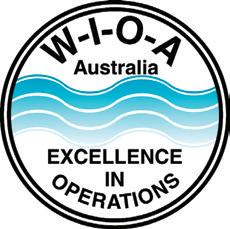













Promoting best practice in water management by building the knowledge, skills and networks of operators.
• Listen to the experience of others through the latest “operational” technical and research based information through platform and poster presentations.
• View and discuss the latest advances in technical equipment, products and services with suppliers and trade consultants.
• Update their knowledge and skills through interaction with fellow water industry employees.

